Sherrick Farm Trail Detour
There is a detour on the trail due to downed trees. Our staff is working diligently to remove these from the trail.
Artifacts Removed From Museum
Due to leaks and humidity issues, most of the historic artifacts have been taken off exhibit to protect them until these issues have been resolved. Exhibit area is still open including text panels, maps, and hands-on-exhibits.
| Title | Antietam |
| Park Code | anti |
| Description | 23,000 soldiers were killed, wounded or missing after twelve hours of savage combat on September 17, 1862. The Battle of Antietam ended the Confederate Army of Northern Virginia's first invasion into the North and led Abraham Lincoln to issue the... |
| Location | |
| Contact | |
| Activities |
|
| Entrance fees |
Entrance - Private Vehicle
$20.00
Personal Vehicle/Family: $20.00 for three days
Entrance - Per Person
$10.00
Individual: $10.00 for three days. This fee admits one individual in a vehicle and also includes hikers, bicyclists or pedestrians. Youth 15 and under are admitted free of charge.
Entrance - Motorcycle
$15.00
Motorcycle: $15.00 This fee admits one individual on a private, non-commercial motorcycle for three days.
Commercial Entrance - Motor Coach
$100.00
$100 Motor Coach/Commercial Tour Groups with 26 or more people
Commercial Entrance - Mini-bus
$40.00
$40 per passenger bus with 16-25 people
Commercial Entrance - Sedan
$25.00
$25 per passenger bus/sedan with 1-6 people
Entrance - Education/Academic Groups
$0.00
To request an Academic Fee Waiver for your group, click on the link for further details.
|
| Campgrounds | Count: 0
|
| Places | Count: 41
132nd Pennsylvania Volunteer Infantry MonumentThe 132nd Pennsylvania was part of the third attack on the Sunken Road. Thirty soldiers from this regiment were lost in the battle. 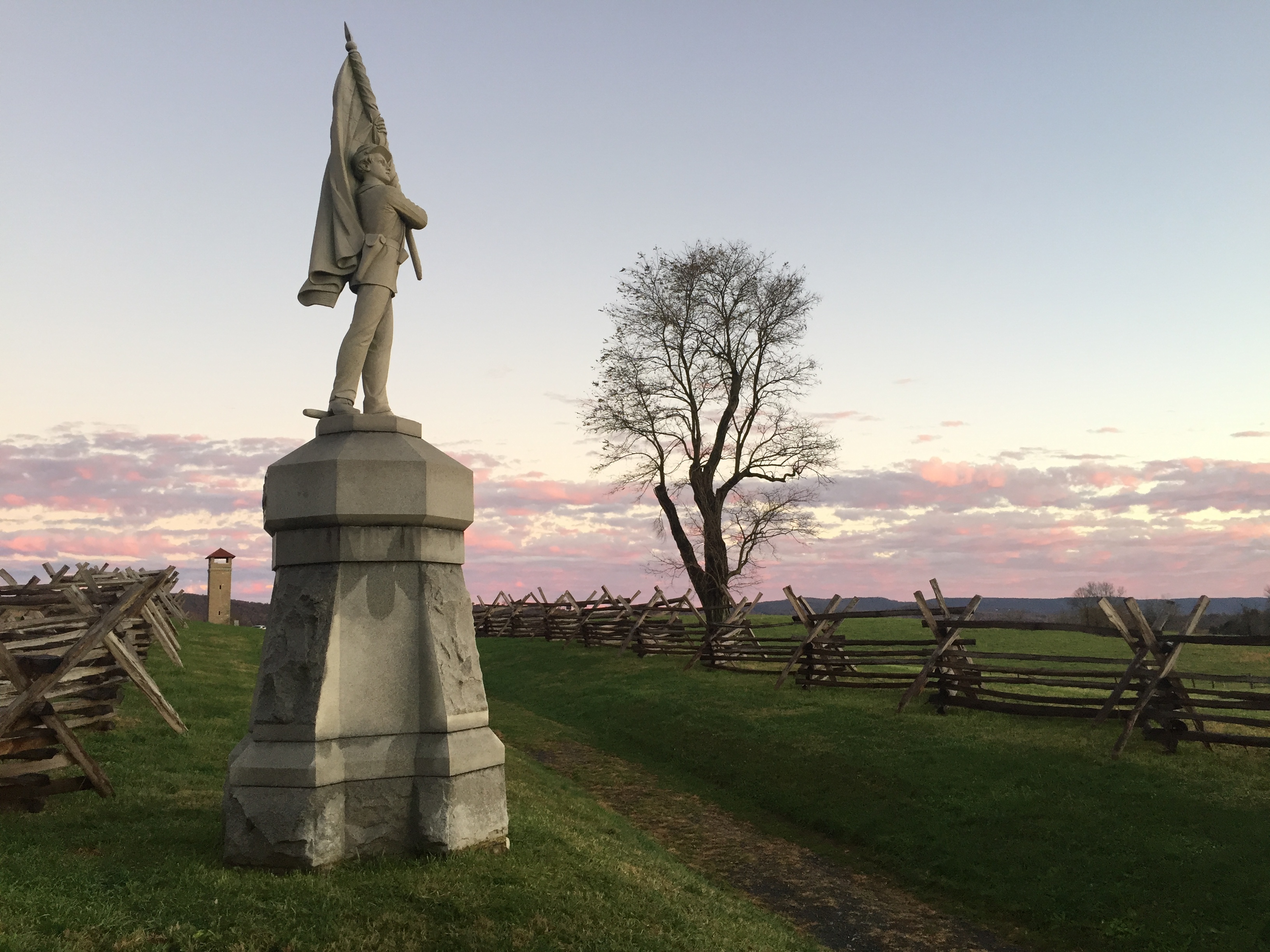
20th New York Volunteer Infantry MonumentThe 20th New York Infantry was organized in New York City. The regiment suffered 145 casualties, some of whom are buried in the National Cemetery. Their veterans’ association erected this monument in 1911. 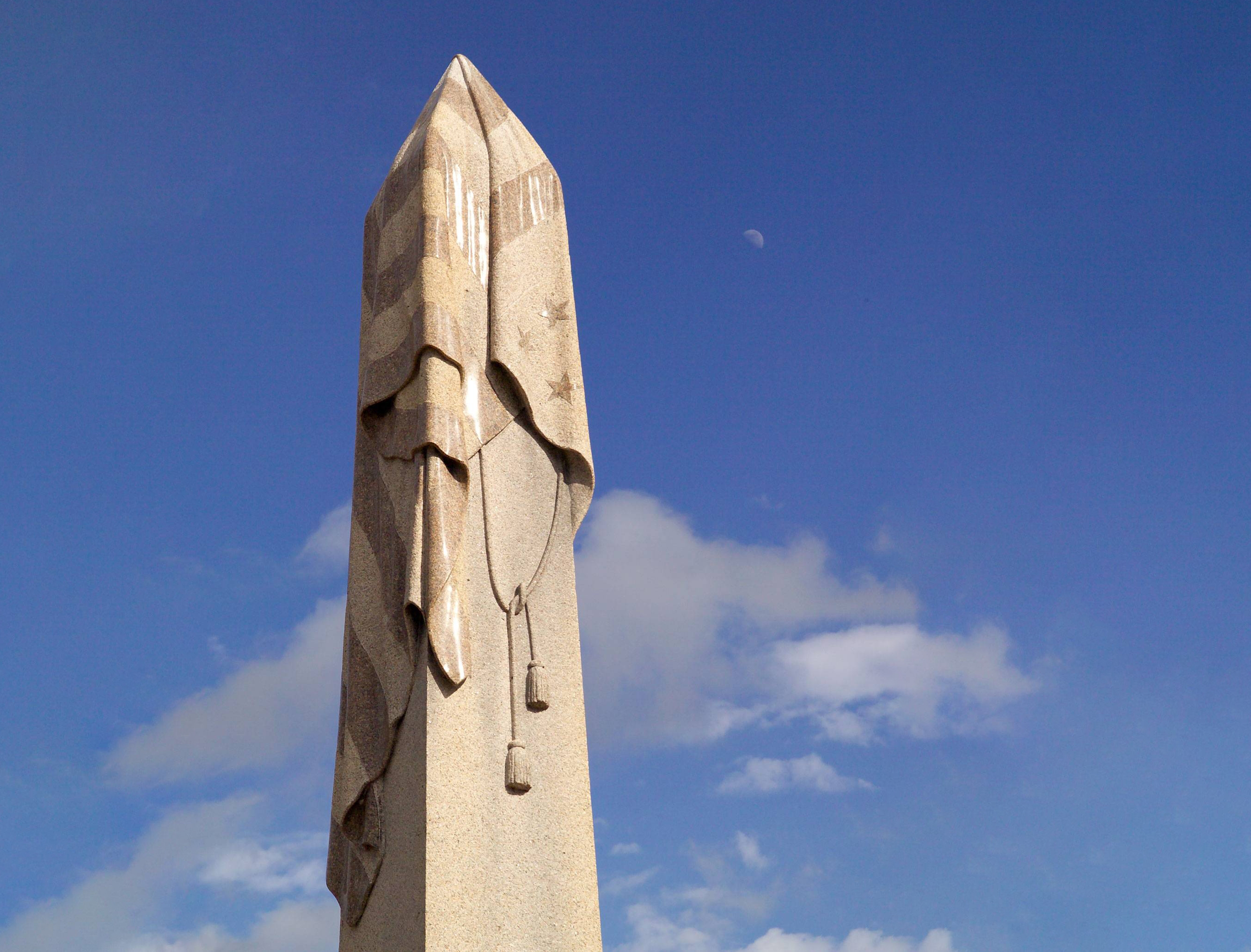
45th Pennsylvania Infantry MonumentMonument to the 45th Pennsylvania Volunteer Infantry Monument who fought for the Union in the Battle of Antietam. 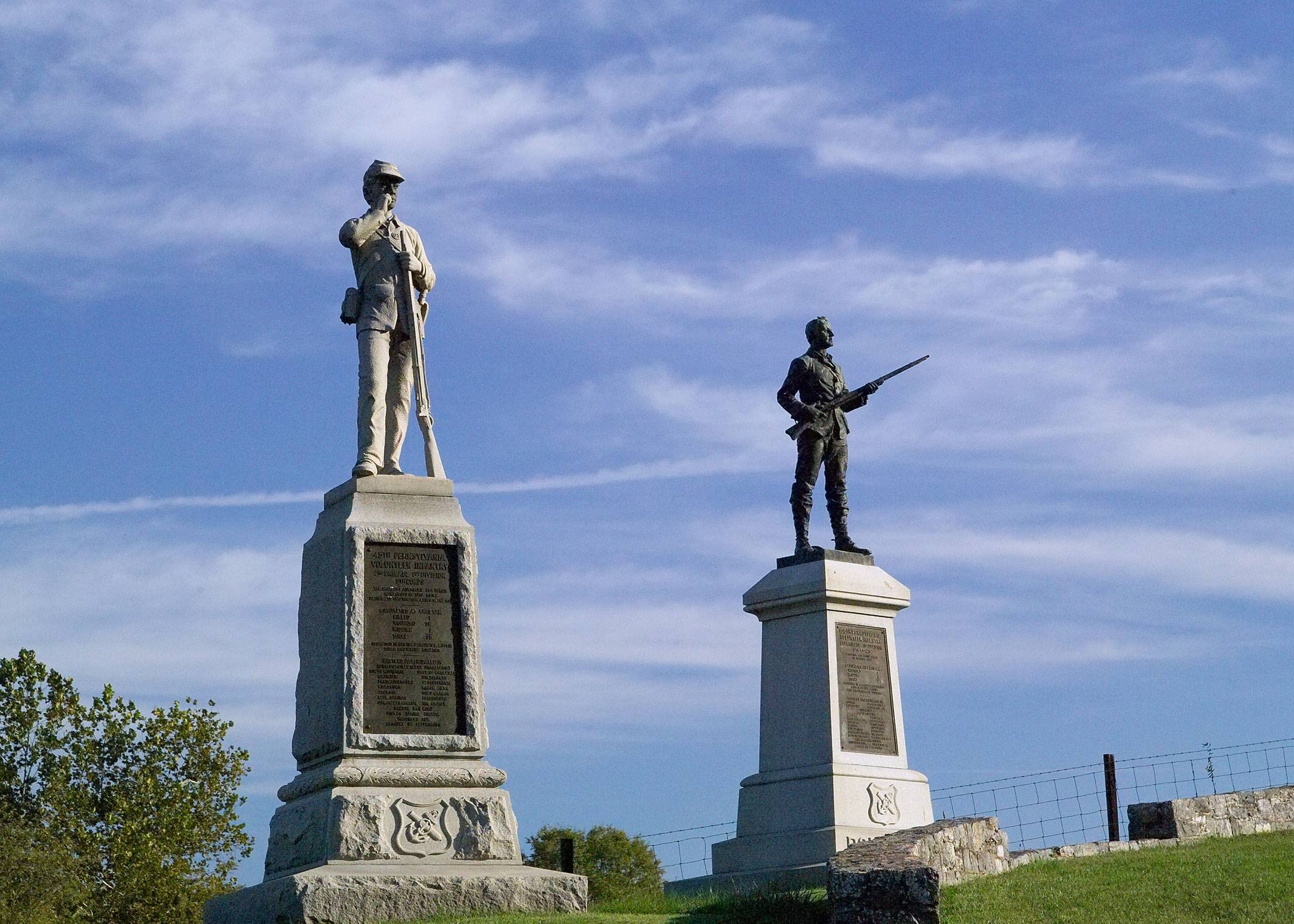
4th Pennsylvania Reserve Monument (33rd) Volunteer Infantry MonumentThe Regt. arrived on the field on the afternoon of September 16, 1862. Formed at this point on the morning of the 17th, advanced about 600 yards South and became engaged with Hood's Confederate Division 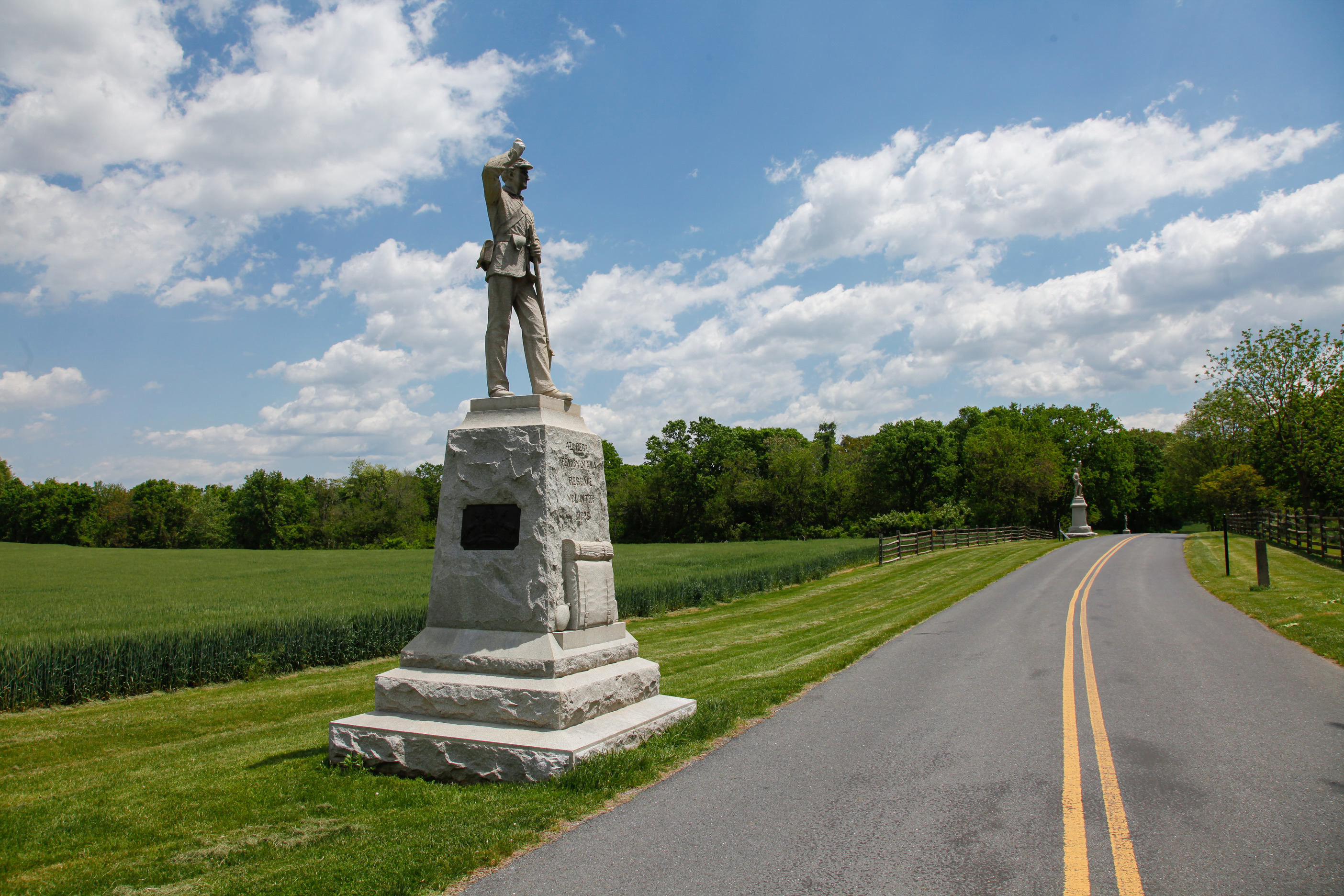
5th, 7th, and 66th Ohio Infantry MonumentA monument to three regiments who fought at the Battle of Antietam. Their combined loss was 17 men killed, 4 officers and 87 men wounded, 2 men missing, total 110. 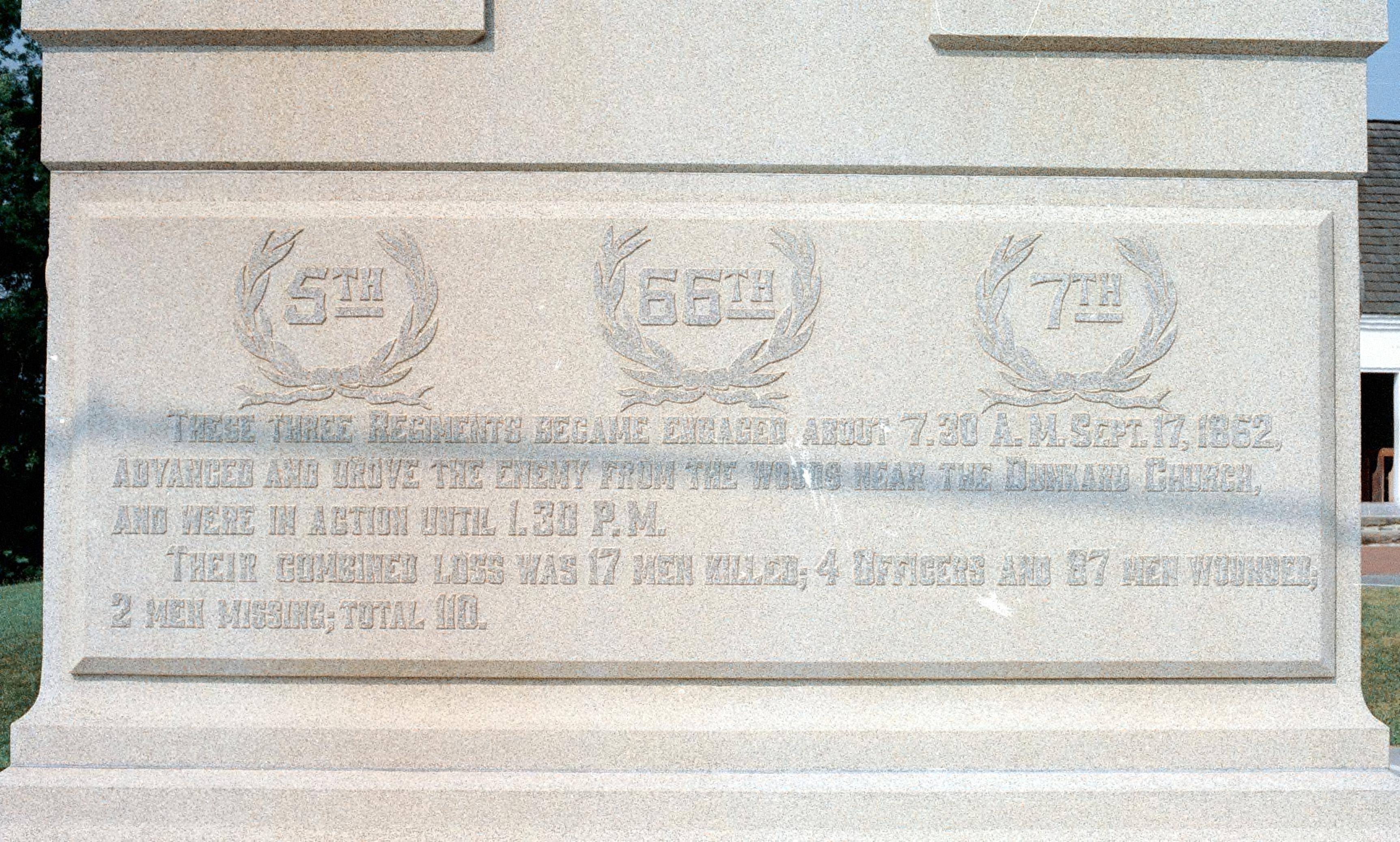
Antietam National CemeteryDedicated on September 17, 1867, the five year anniversary of the battle, the Antietam National Cemetery contains the remains of 4,700 Federal soldiers who were either killed or mortally wounded at the battles of Antietam, South Mountain, Monocacy and other actions in Maryland. 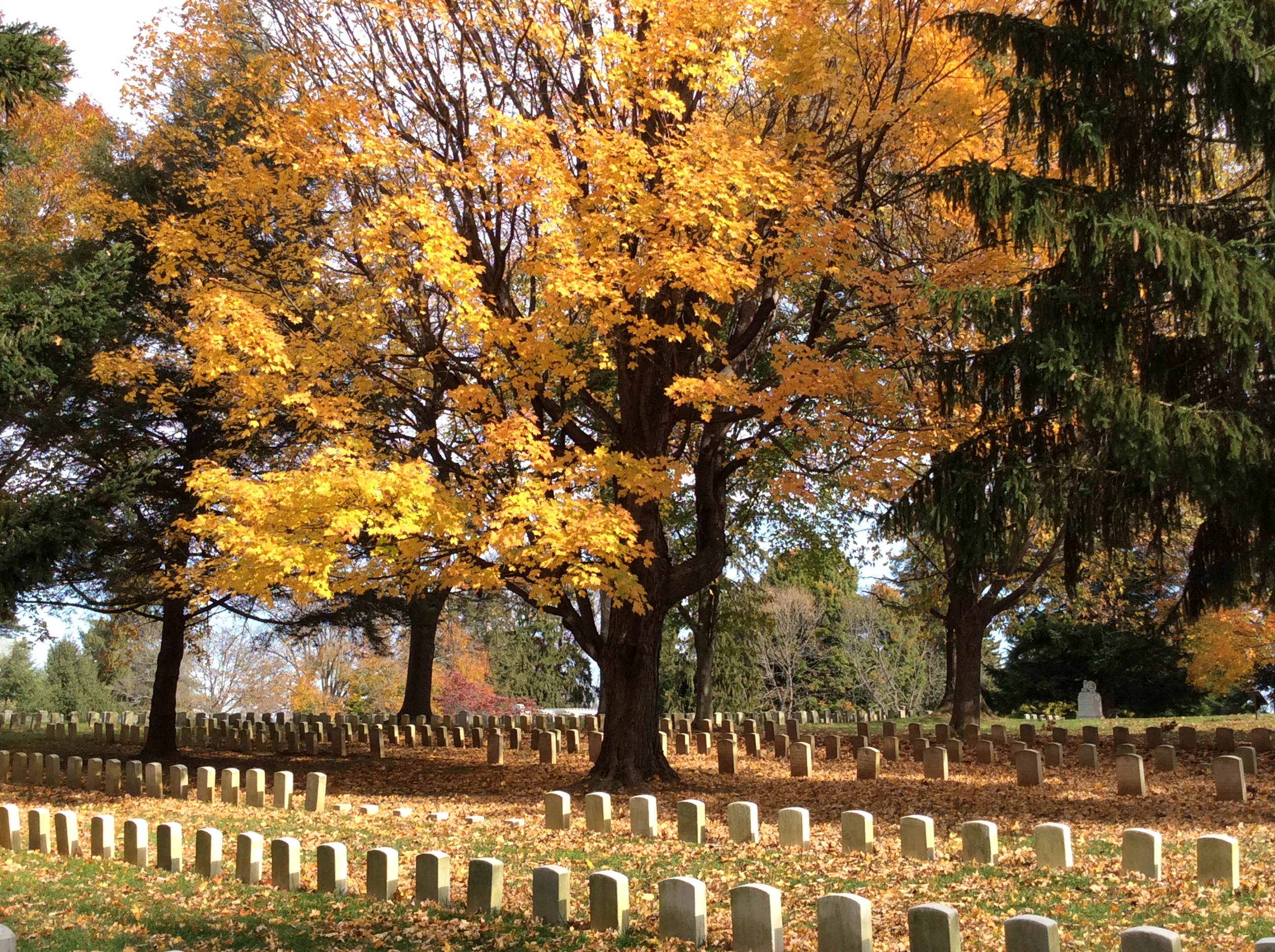
Burnside BridgeBurnside Bridge played a key role in the Battle of Antietam when 400 Confederate soldiers managed to hold the line for several hours, preventing 12,000 Federals from forcing a crossing of the bridge and seizing the strategic high ground. 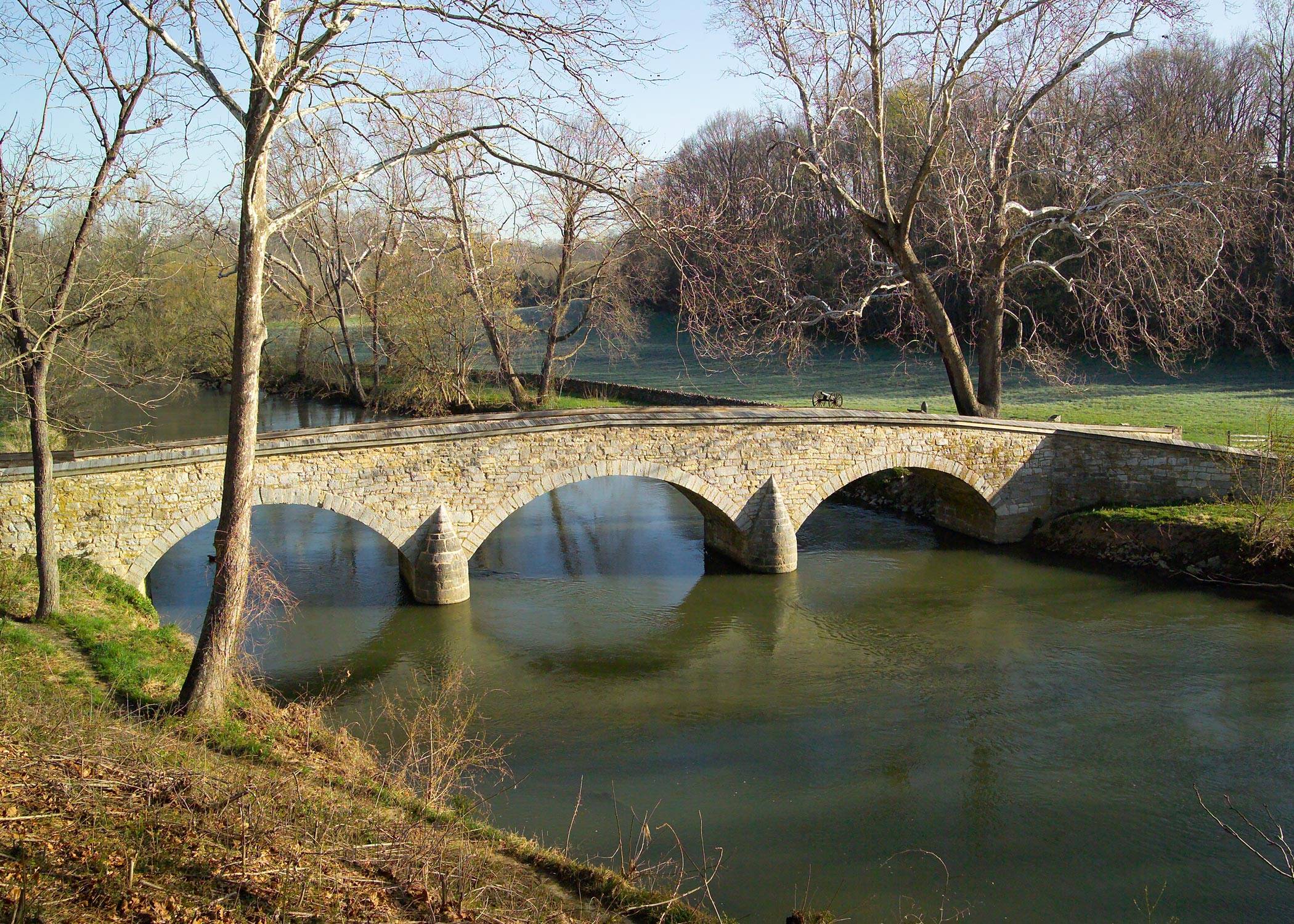
Clara Barton MonumentDuring The Battle of Antietam September 17, 1862 Clara Barton brought supplies and nursing aid to the wounded on this battlefield This act of love and mercy led to the birth of the present American National Red Cross 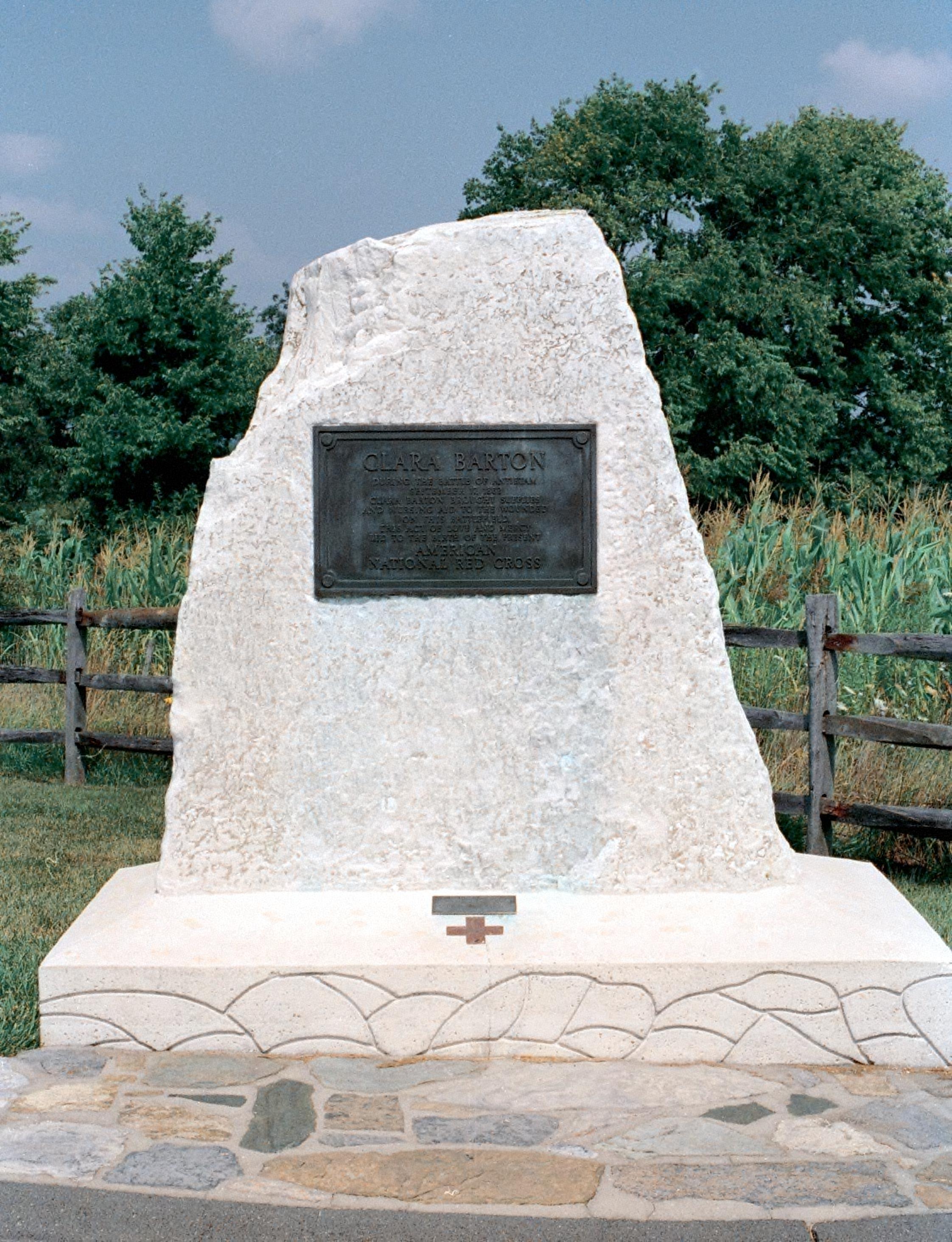
Dunker ChurchDunker Church, a meeting house for the German Baptist Brethren who lived in the Sharpsburg area, was the focal point of repeated clashes during the Battle of Antietam as both the Union and Confederate armies sought to occupy and hold the high ground around it. 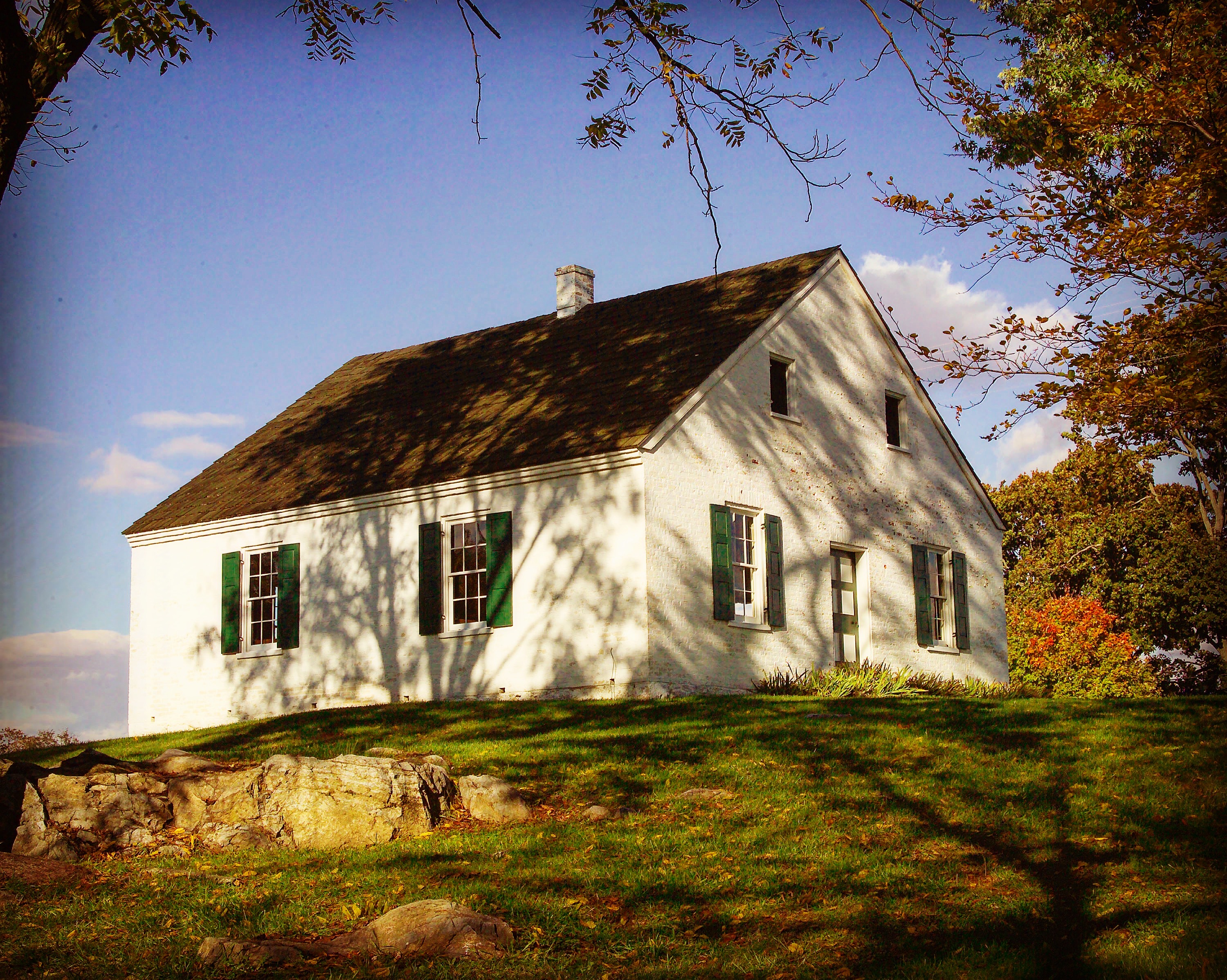
George Simpson Antietam National Cemetery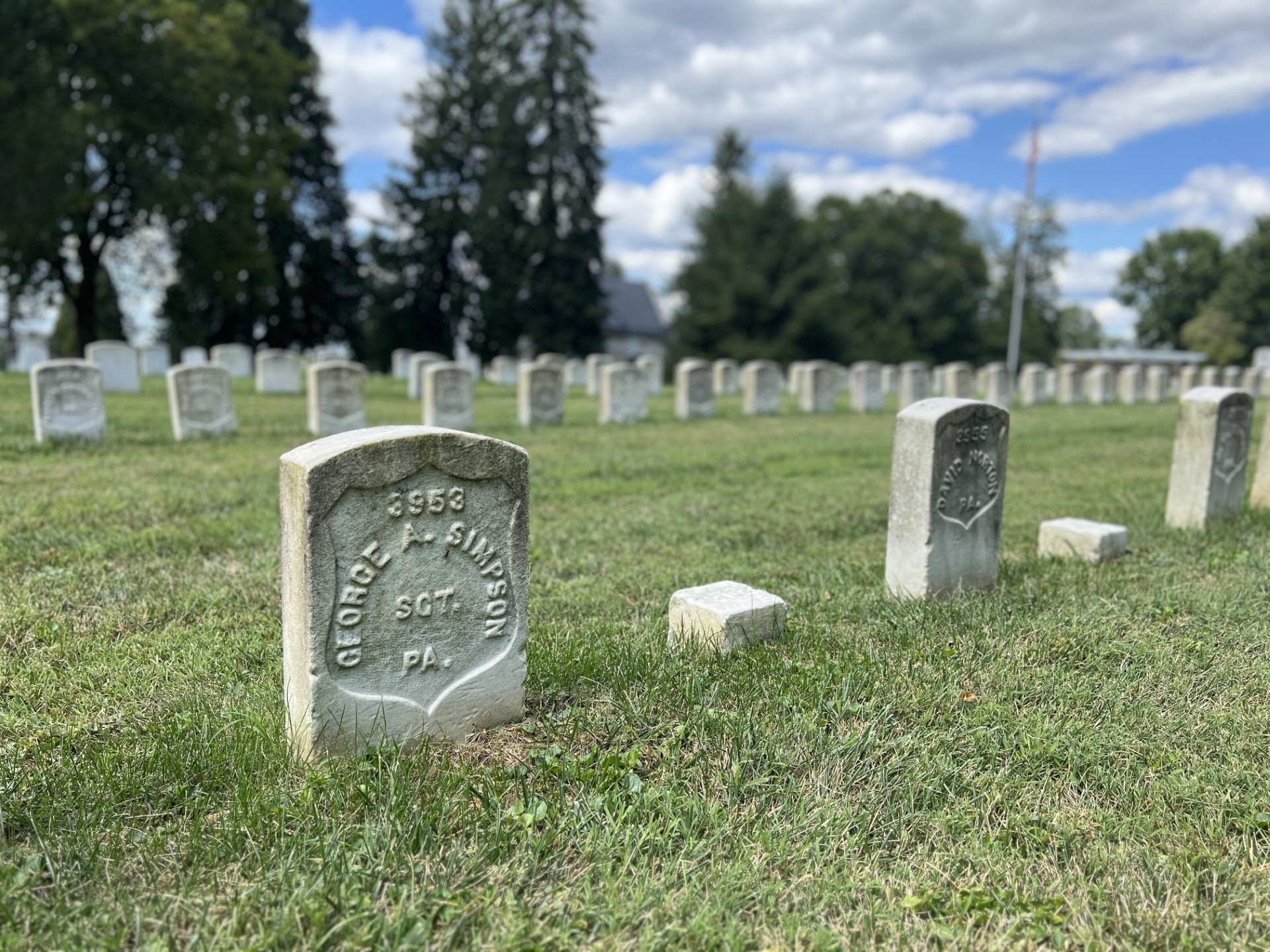
Lee’s Artillery BattalionConfederate Col. Stephen D. Lee held this position with about nineteen guns, including units from Virginia, Louisiana, and South Carolina. Four types of Civil War cannons that represent Colonel Lee’s position are on display. 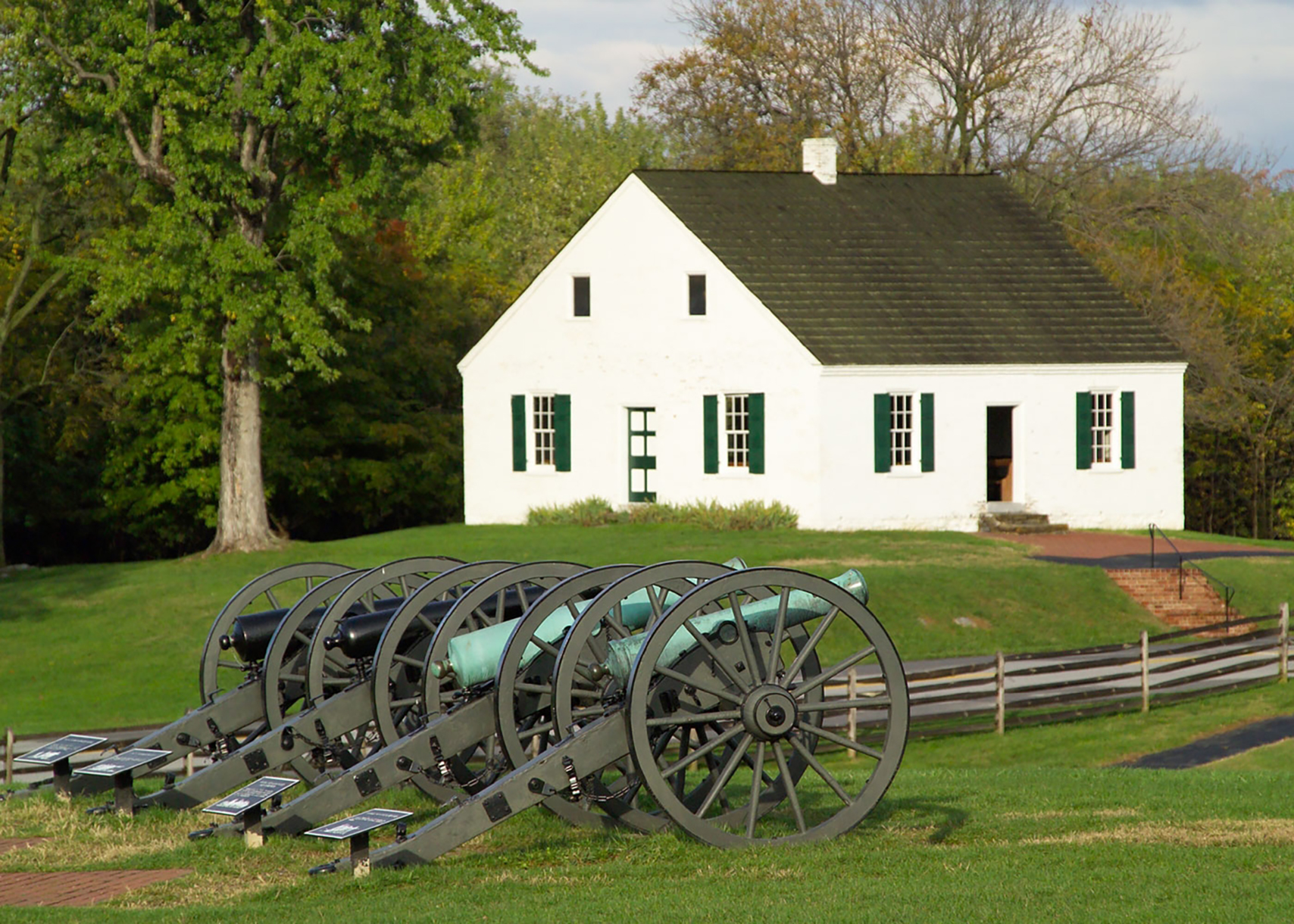
Maryland State MonumentThis monument is the only one on the battlefield dedicated to the soldiers who fought for both sides. Approximately 20,000 people attended the dedication of the monument on Memorial Day, May 30, 1900. 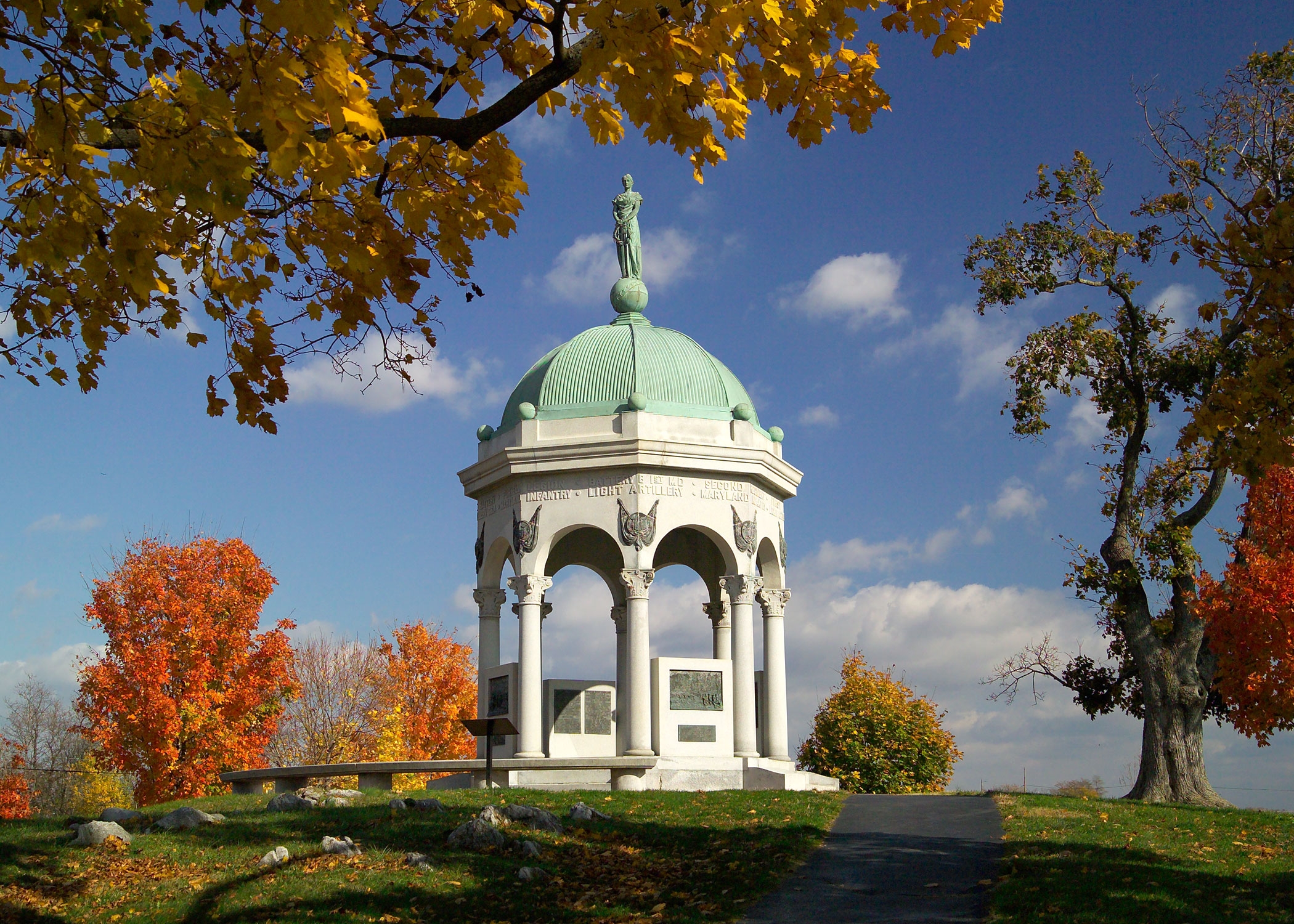
May Lundberg Antietam National CemeteryMay Lundberg is the only female veteran buried in Antietam National Cemetery. During World War I, she served as an officer in the Army Nurse Corps working at the American Hospital of Paris and for Red Cross Hospital in Paris. 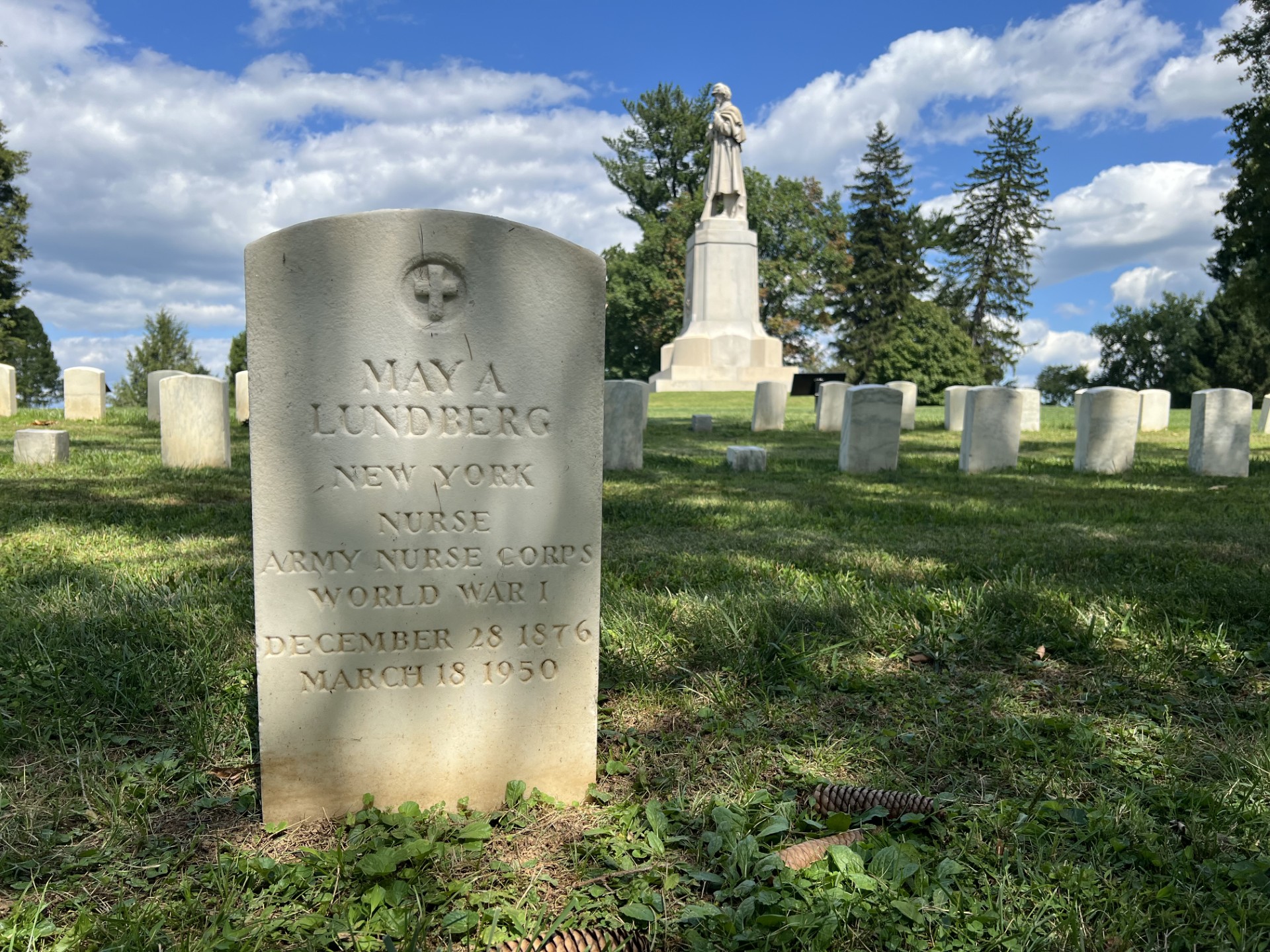
McKinley MonumentThe monument stands on the spot where, as a teenager in 1862, the future President McKinley served coffee to his comrades during the combat of the Battle of Antietam. The inscription on the monument states that McKinley delivered his coffee "under fire" and "personally and without orders. William McKinley survived the Civil War, only to be killed by an assassin’s bullet while serving as the nation’s 25th President. 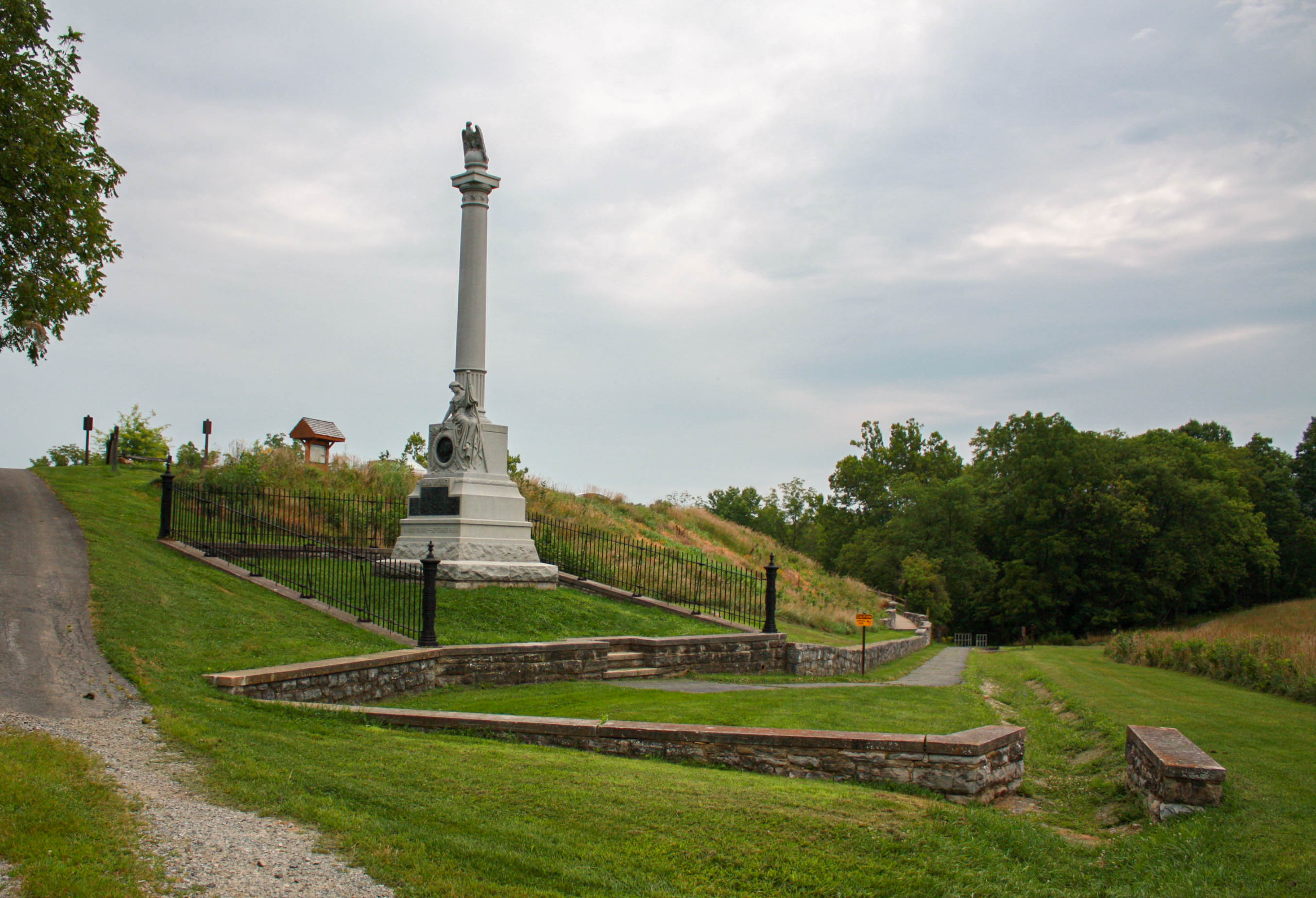
Monument to Gen. Robert E. LeeThe monument to General Lee and his role in the Battle of Antietam. At Antietam he hoped for a decisive victory, but Lee had to settle for a military draw. 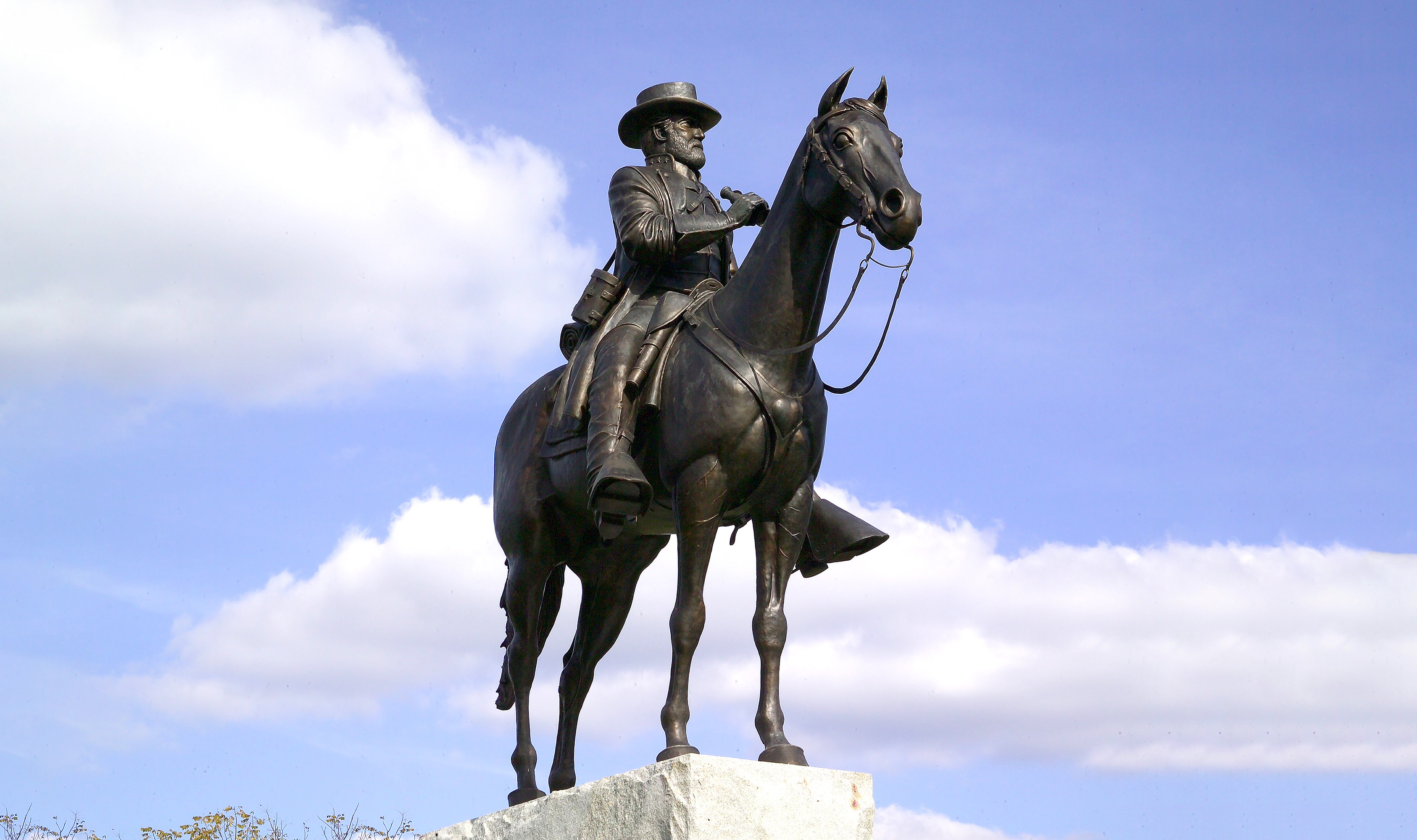
Mumma FarmBurned by the Confederates to prevent their use by Union sharpshooters, the Mumma farm was the only civilian property intentionally destroyed during the battle. 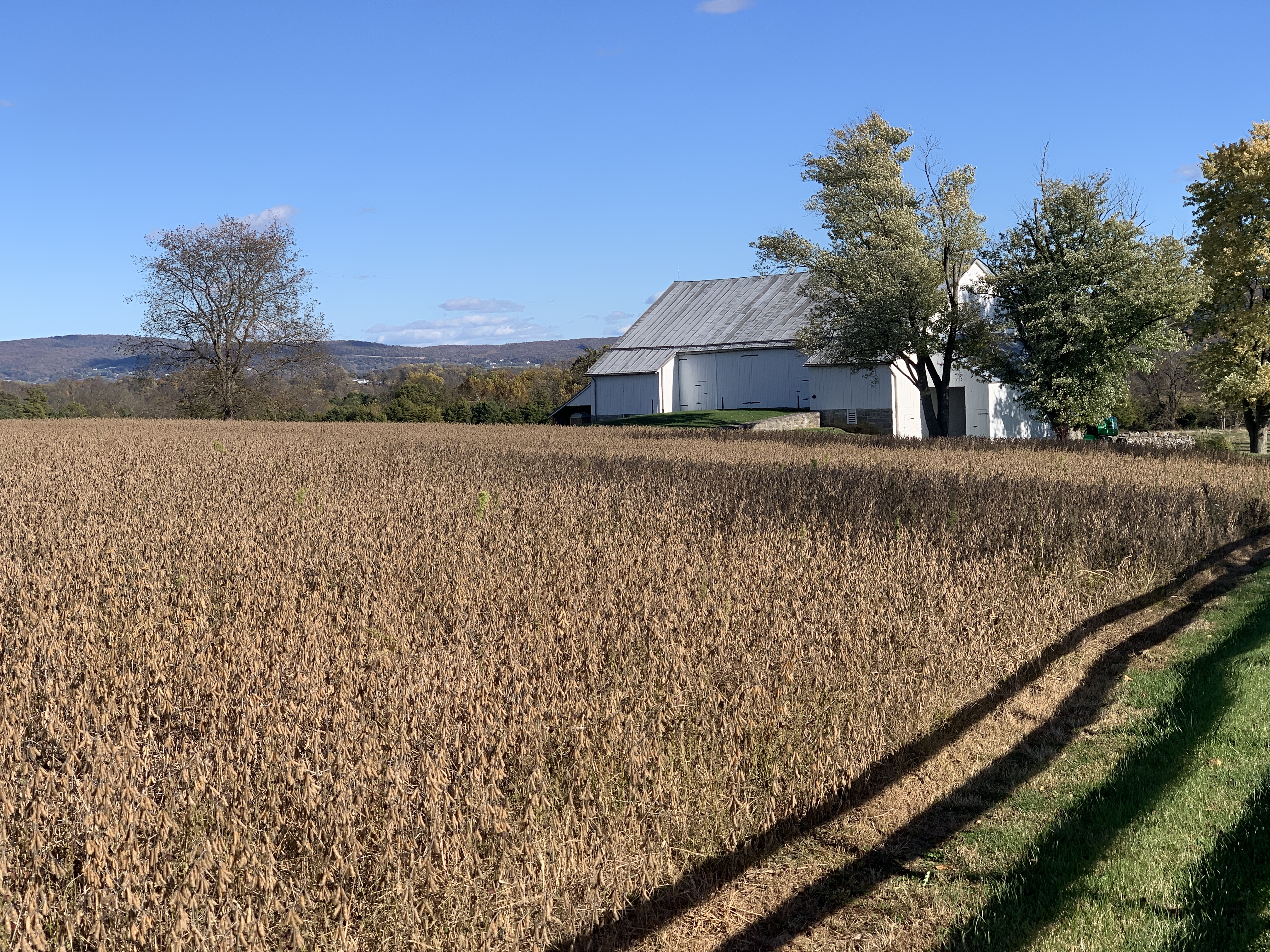
New York State MonumentOne of the tallest monuments on the field at about 58 feet tall, it was dedicated September 17, 1920, on the 58th Anniversary of the Battle of Antietam. The bronze tablets list the generals from New York who were in command and the New York regiments and batteries at Antietam and depict the New York State coat of arms. Almost one-fourth of the Union army at Antietam was from New York. Over 250 Civil War veterans attended the dedication. 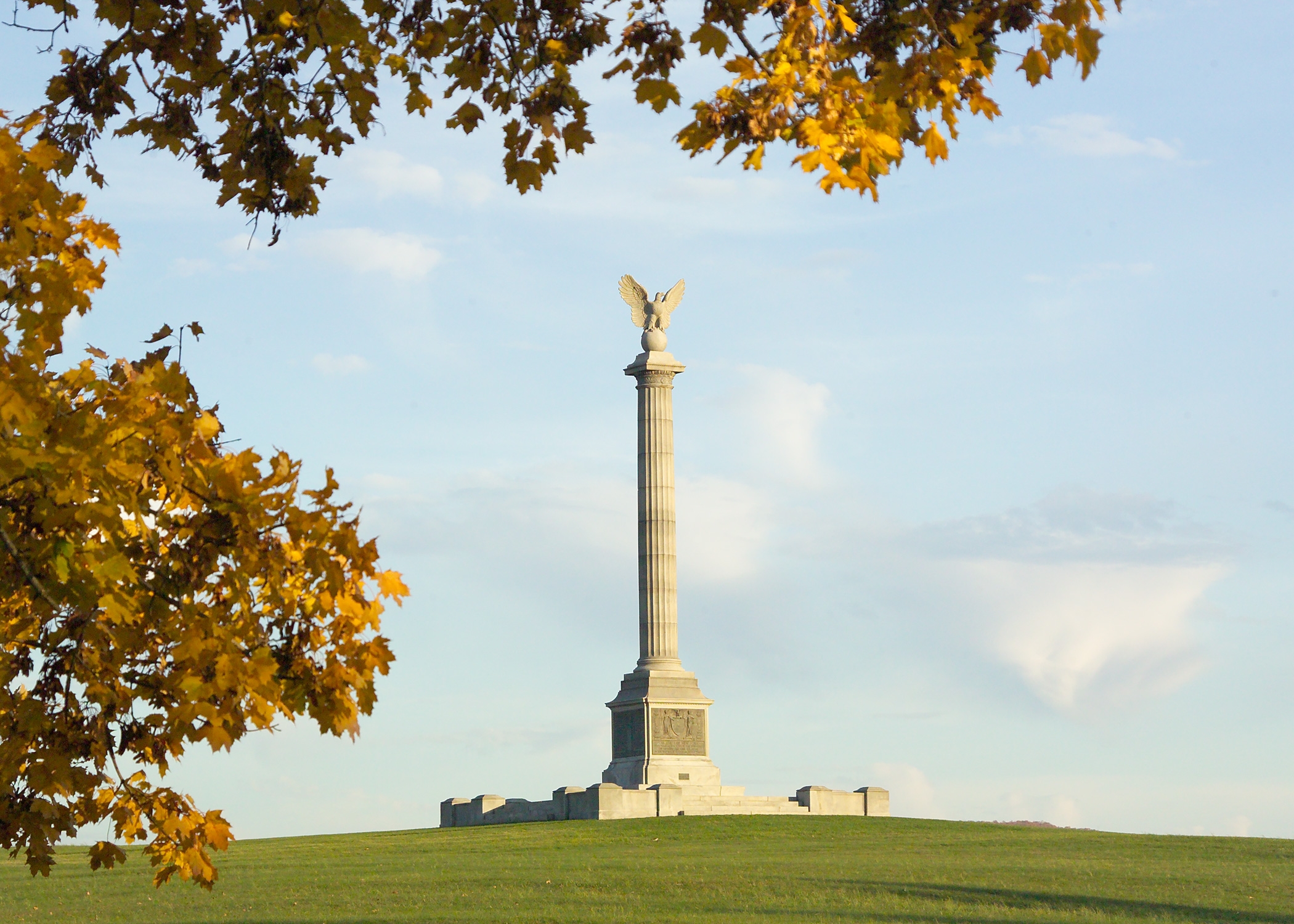
Observation TowerThe Observation Tower, which provides a sweeping panorama of the Antietam battlefield, was constructed at the end of the Sunken Road in 1897 by the War Department as part of its efforts to make the battlefield into an open air classroom. 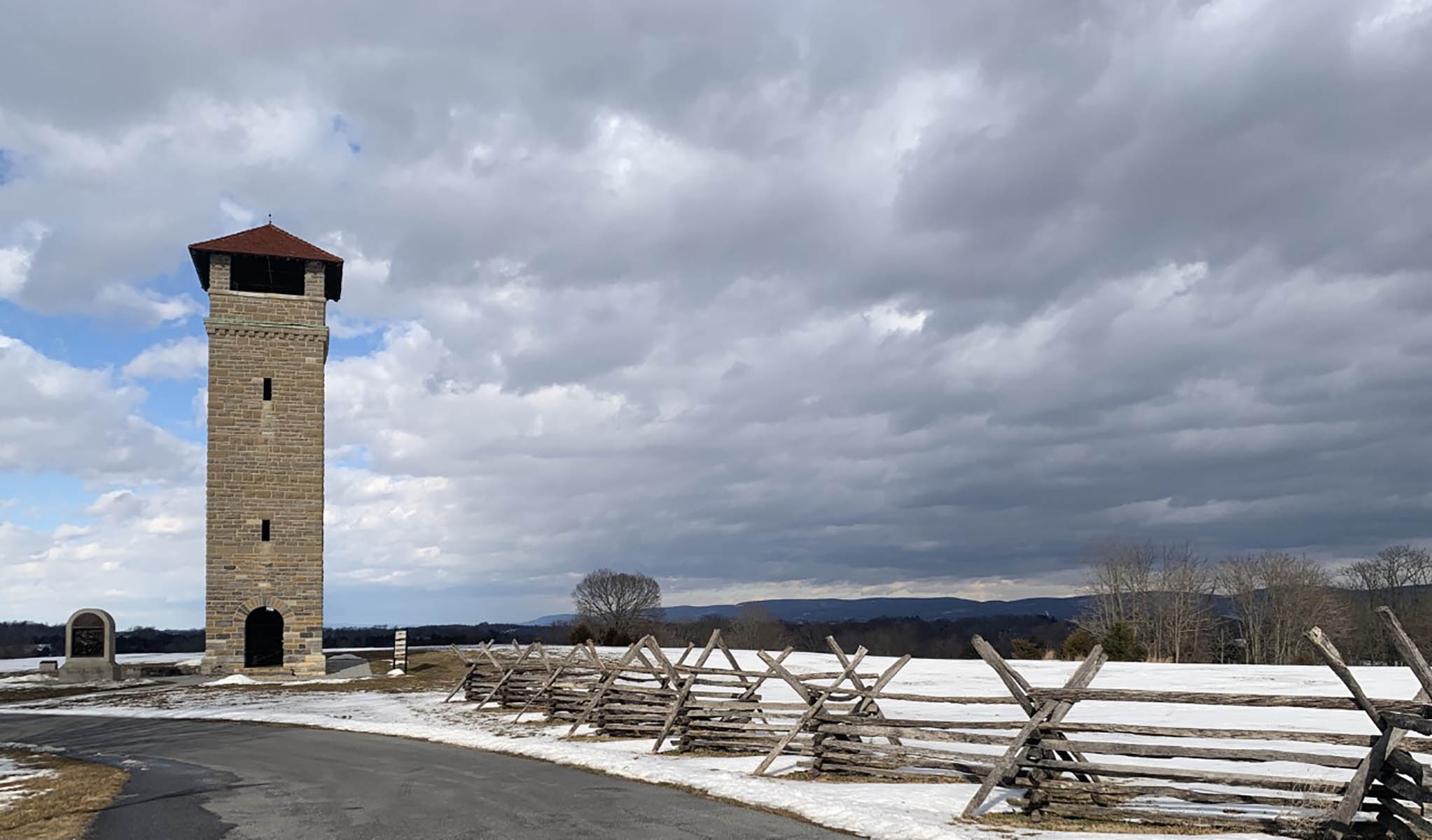
Patrick Roy Antietam National Cemetery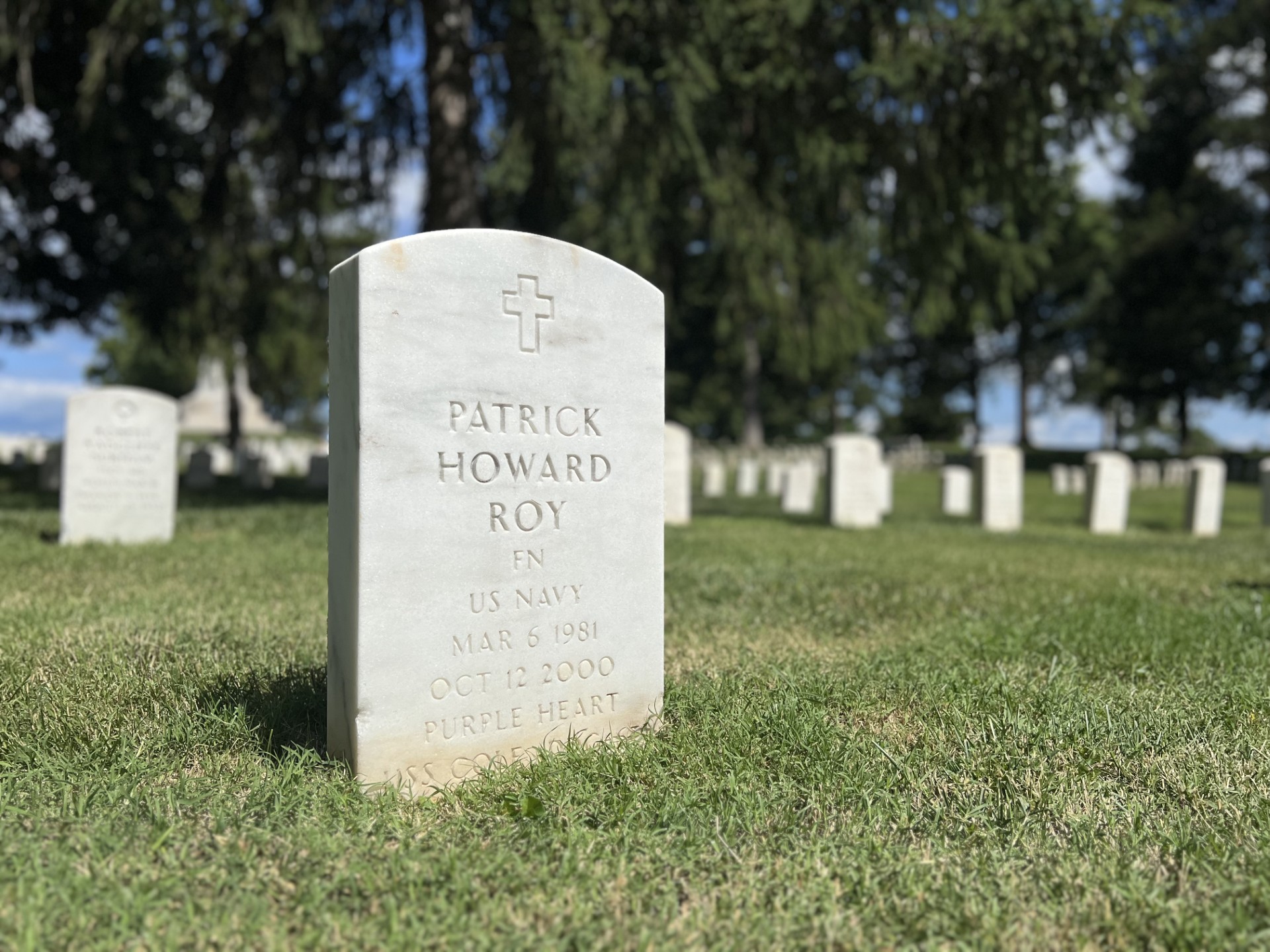
Philadelphia Brigade MonumentThis monument honors the men of the Philadelphia Brigade that fought at the Battle of Antietam. It was dedicated on September 17, 1896, and is the tallest monument at Antietam, standing 73 feet high. The brigade lost more than 550 men during the fighting in the West Woods. 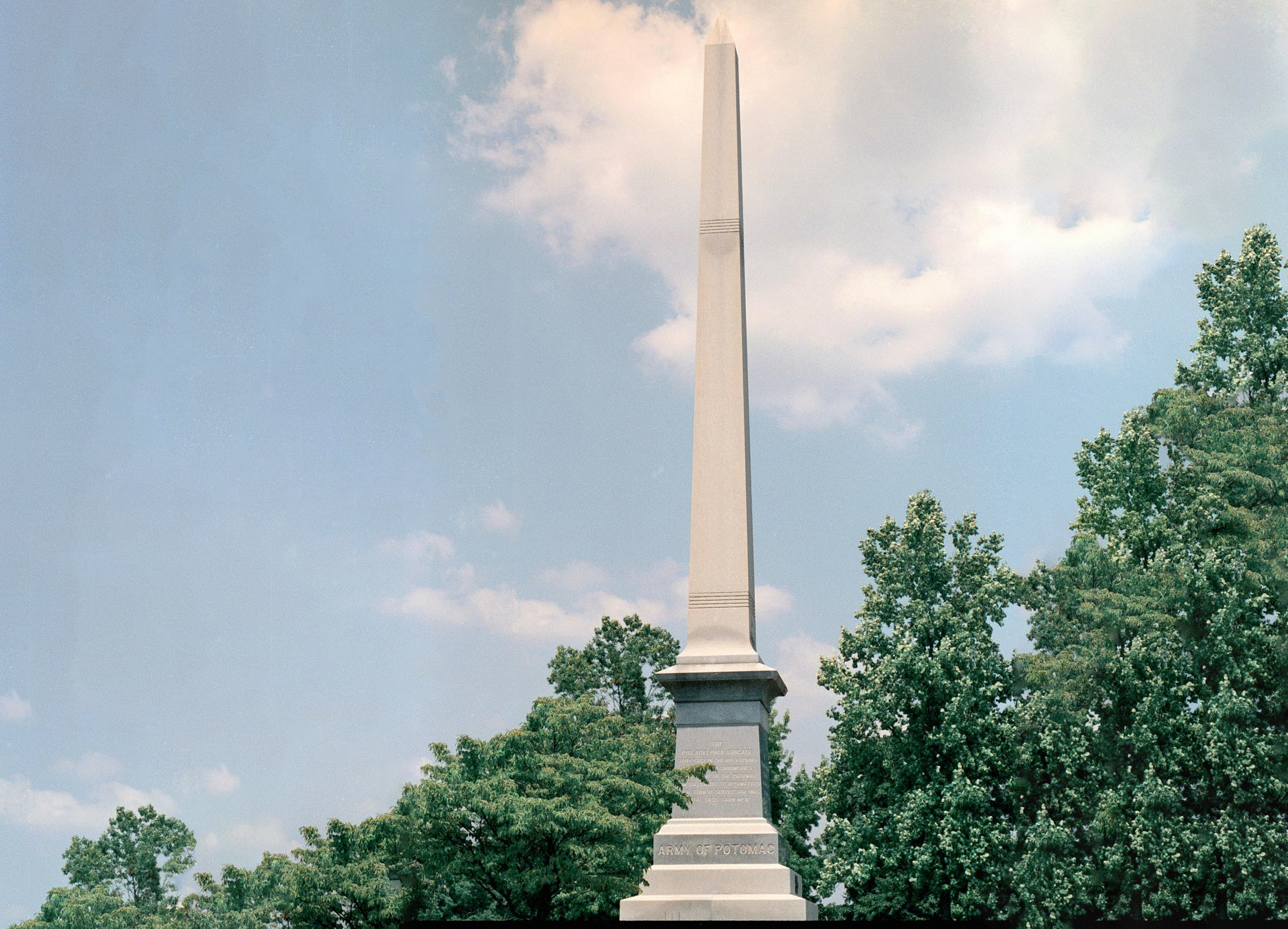
Philip Pry FarmThe Philip Pry House served as headquarters for Maj. Gen. George B. McClellan, Union commander during the Battle of Antietam, and as a field hospital and headquarter of the Army of the Potomac medical department in the aftermath. 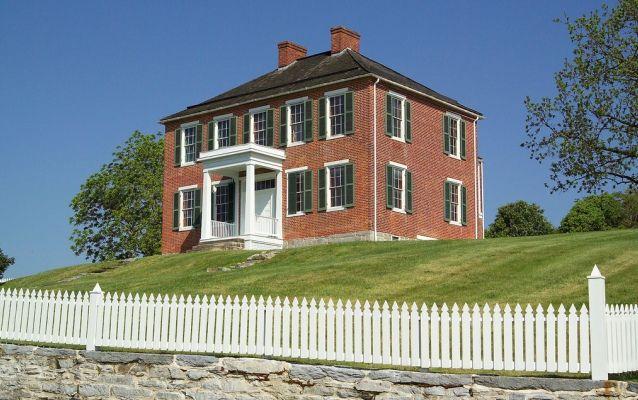
Private Soldier Monument Antietam National Cemetery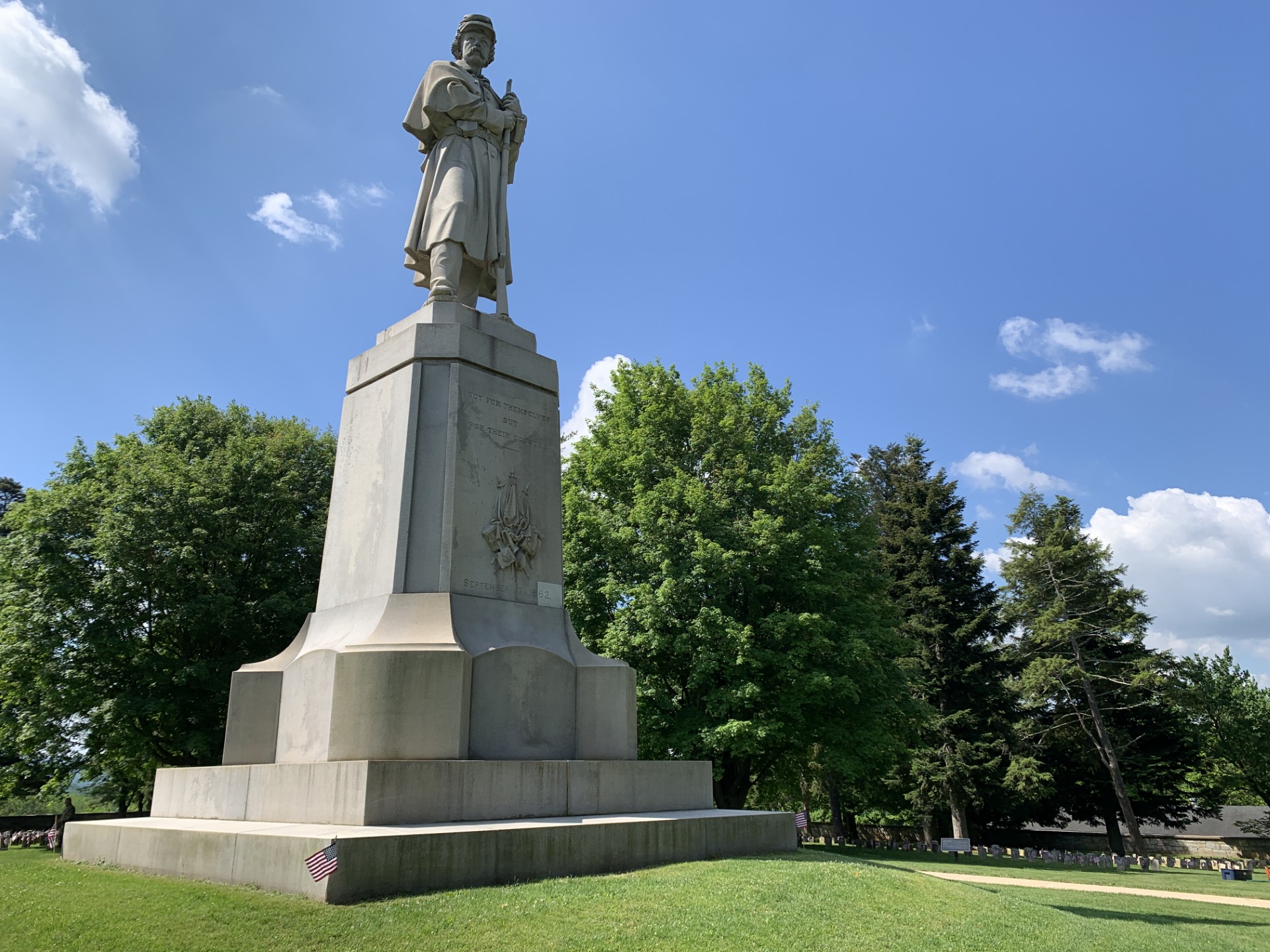
Roulette FarmDuring the Battle of Antietam, thousands of Union soldiers passed through the Roulette farm on their way to the fighting at the Sunken Road. Afterwards, their the barn was used as a field hospital for many of the wounded and over 700 soldiers were buried in the fields. 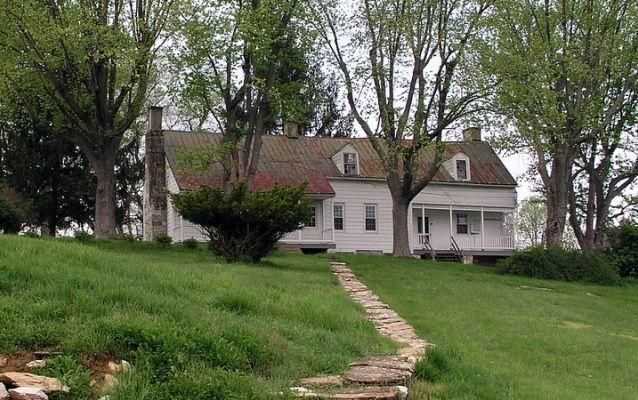
Sunken RoadDuring the Battle of Antietam, thousands of men blazed away at each other at point-blank range along the Sunken Road. Eventually the Union forced the defenders back, leaving 5,500 soldiers dead or wounded on the field and in the road. Soldiers who fought here described it as the "road of death" and a "ghastly flooring." From that day forward, the road has been known as Bloody Lane. 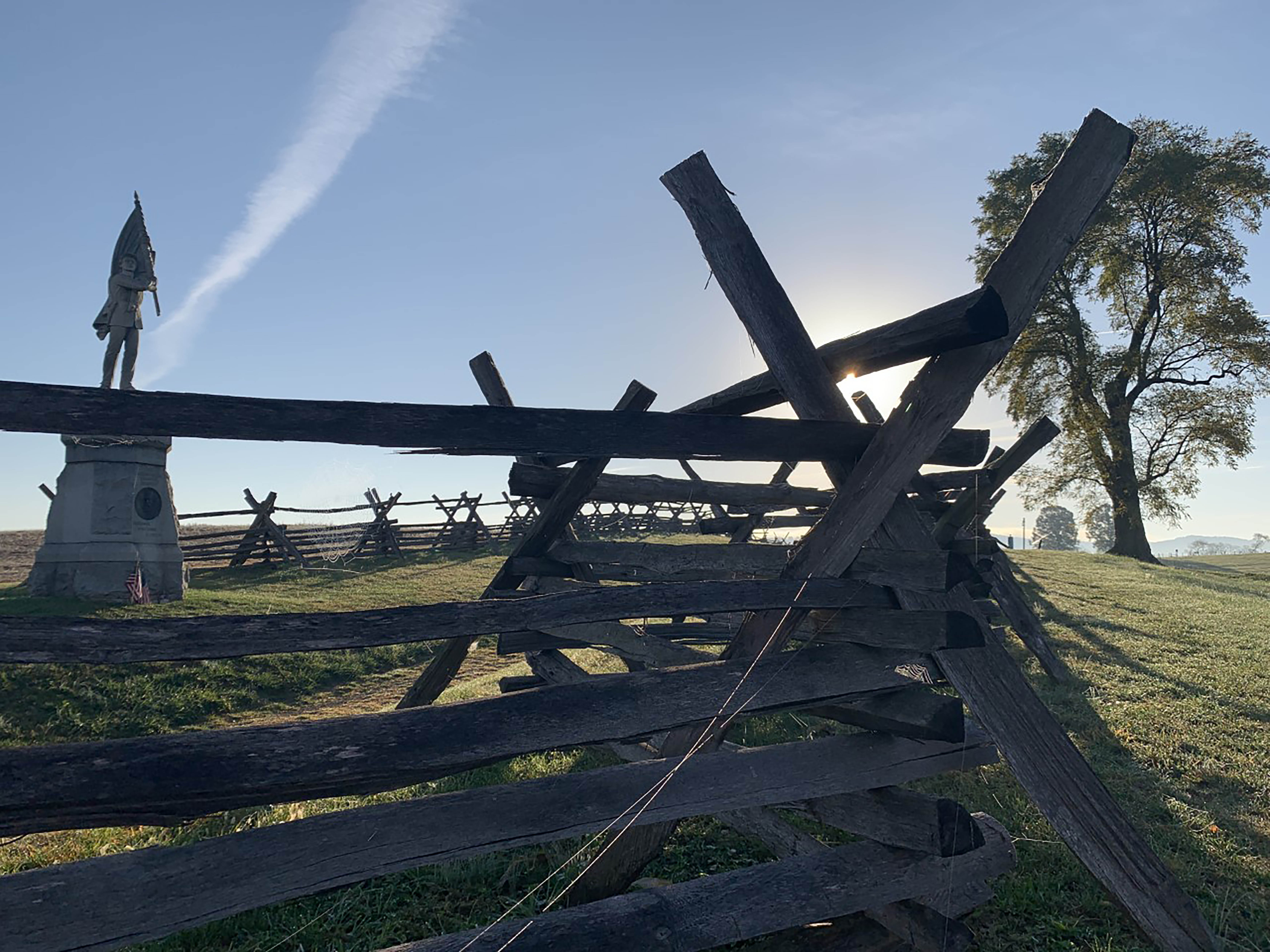
The CornfieldMore than 25,000 soldiers fought in and around the Cornfield. By 9:30 a.m. thousands of them lay dead and dying. Confederate Gen. John Bell Hood wrote: "It was here that I witnessed the most terrible clash of arms, by far, that has occurred during the war." Union Gen. Joseph Hooker remembered that "every stalk of corn in the northern and greater part of the field was cut as closely as could have been done with a knife." 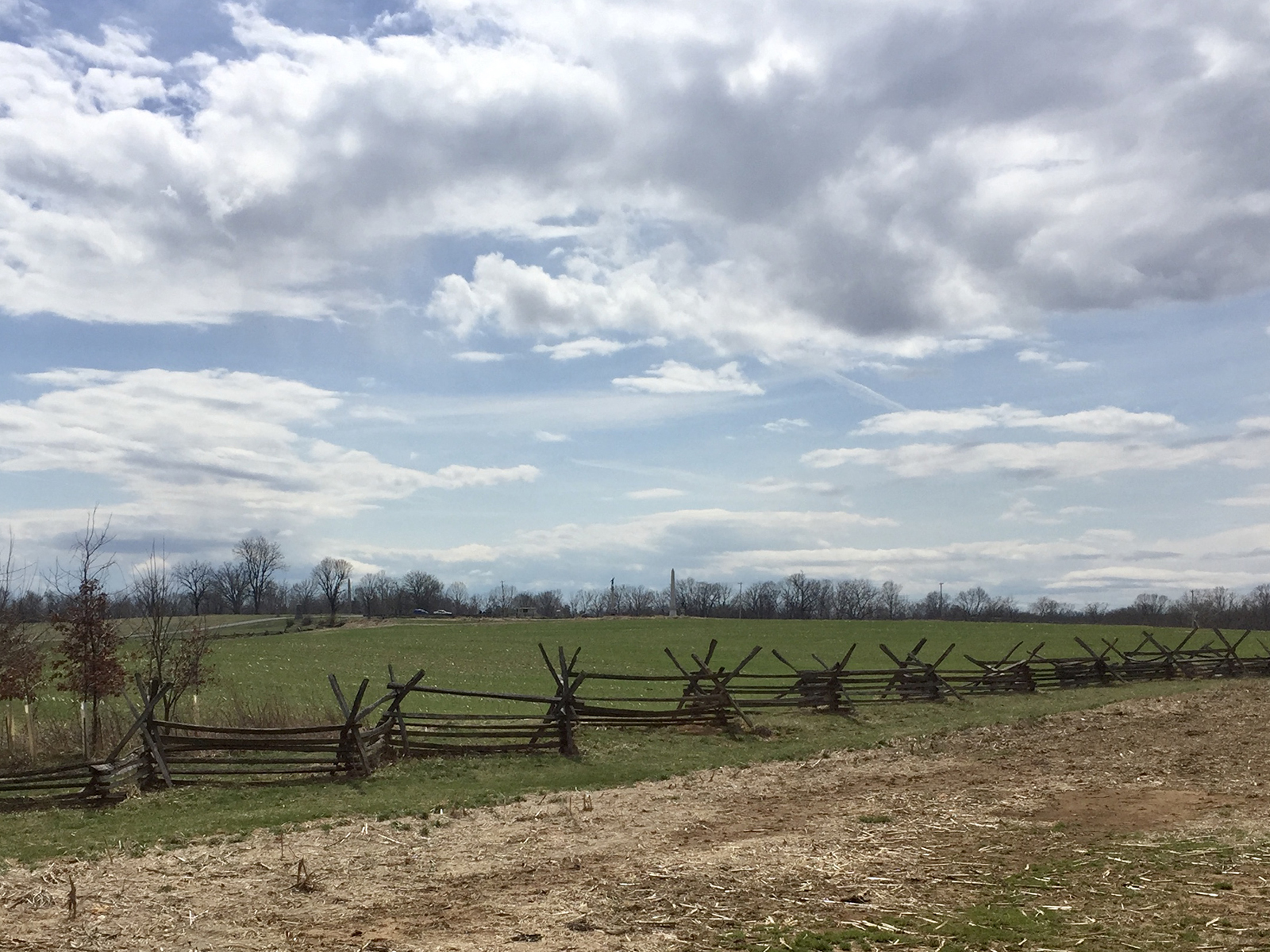
The East WoodsThe first infantry engagement at Antietam took place here during the early evening hours of September 16. As darkness fell, Federal soldiers from Hooker's First Corps clashed with Confederates under Stonewall Jackson. The opposing picket lines exchanged fire throughout the damp and dismal night. 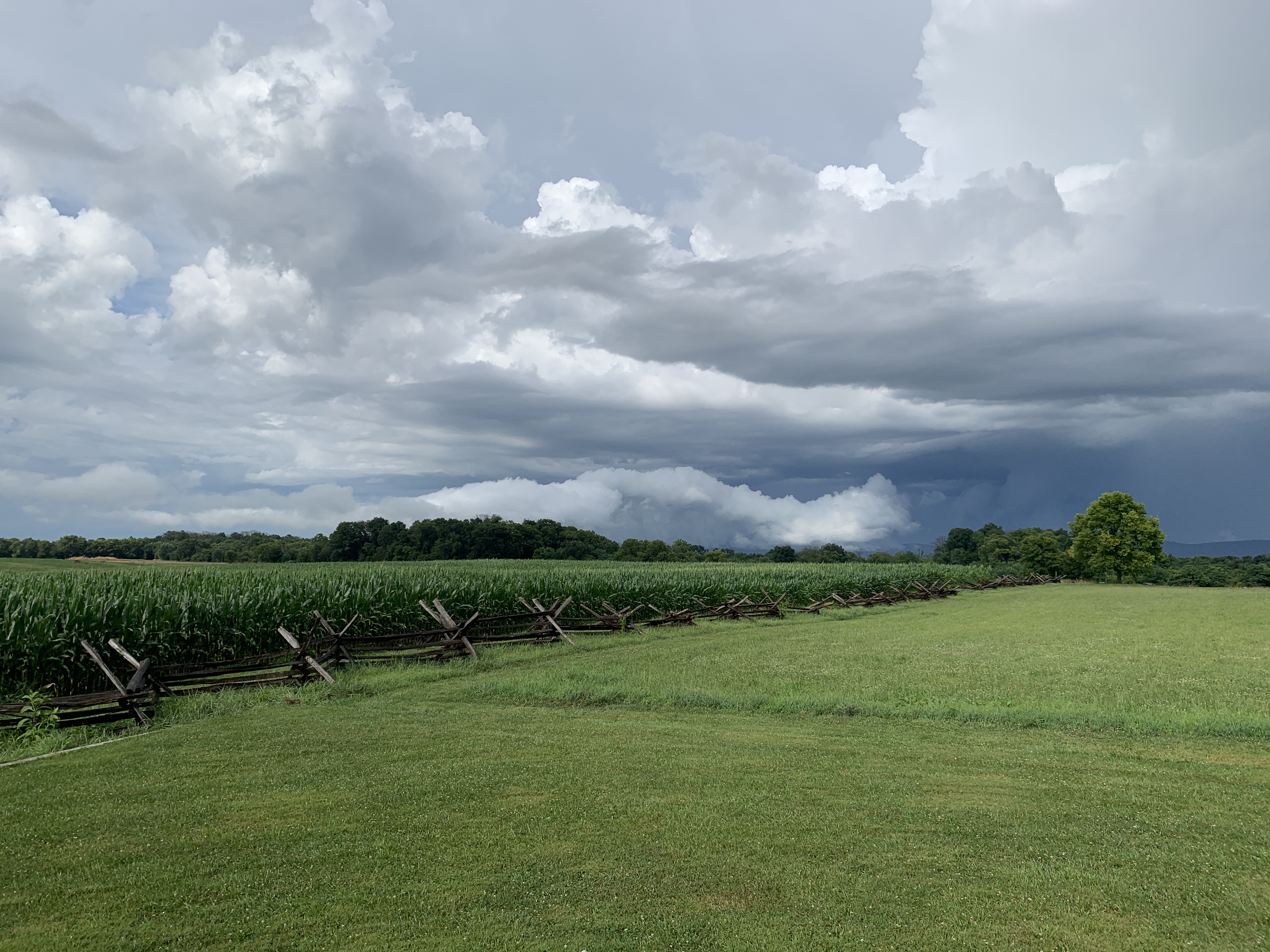
The Final Attack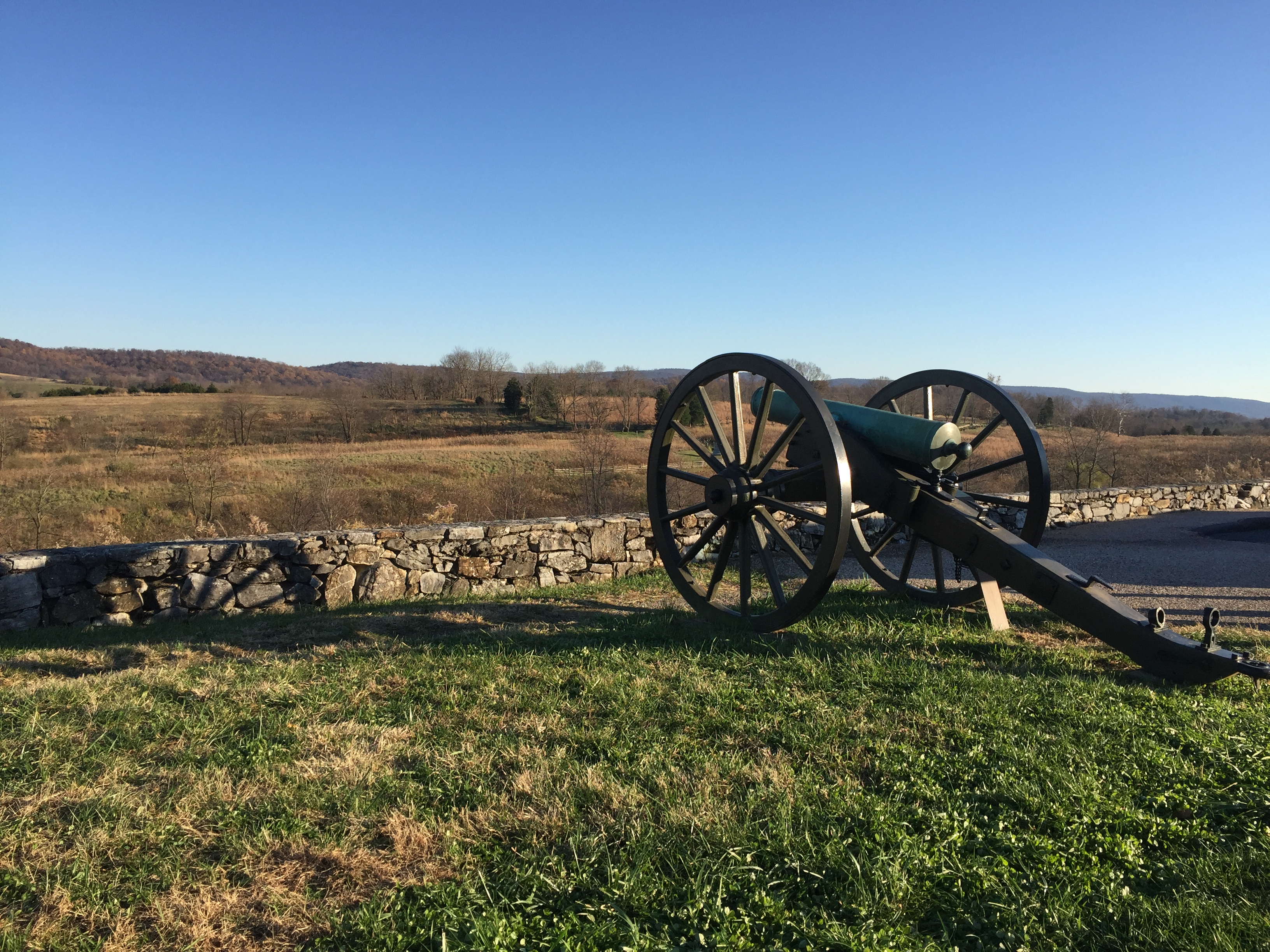
The Joseph Poffenberger Farm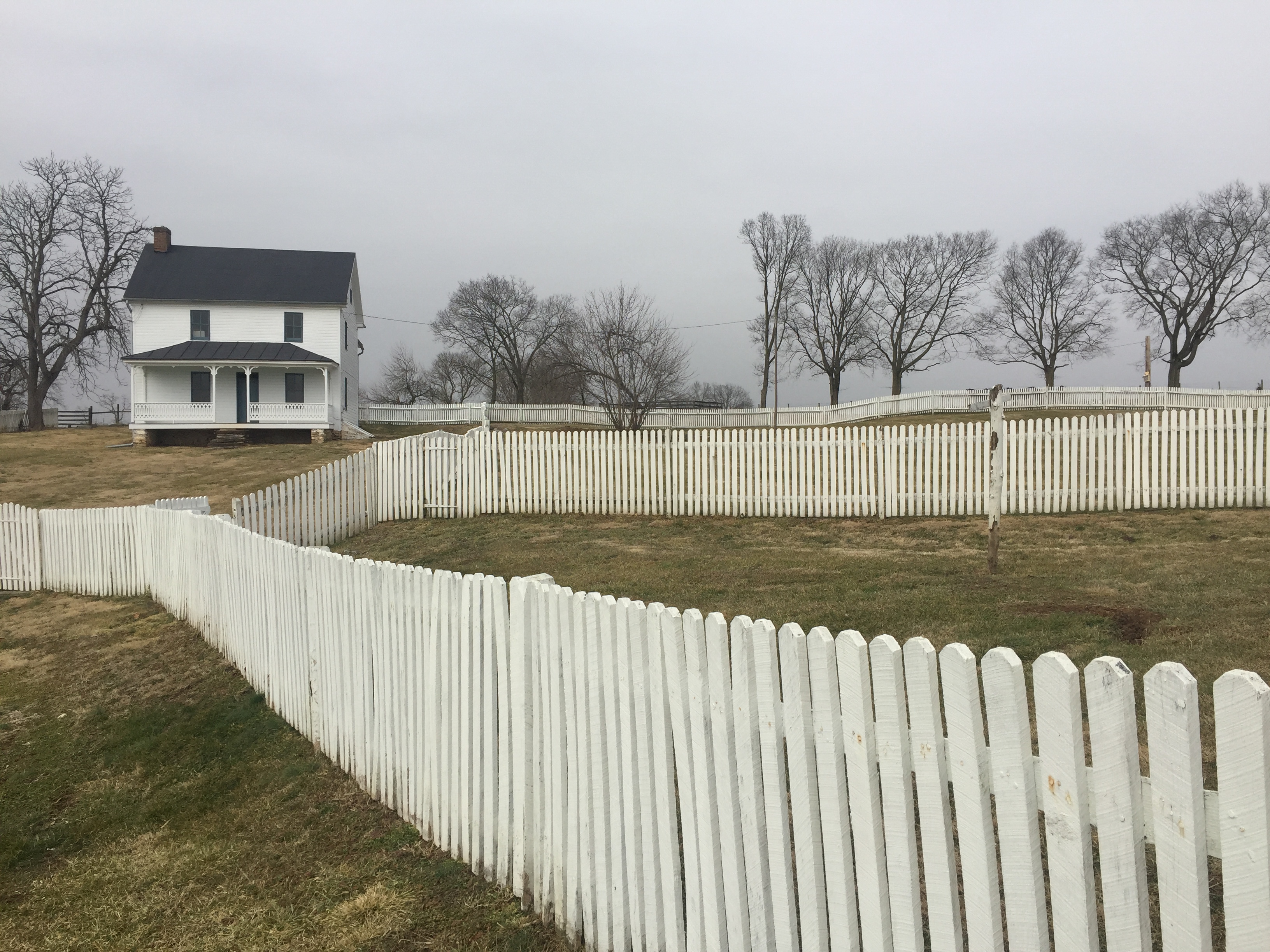
The Miller Farm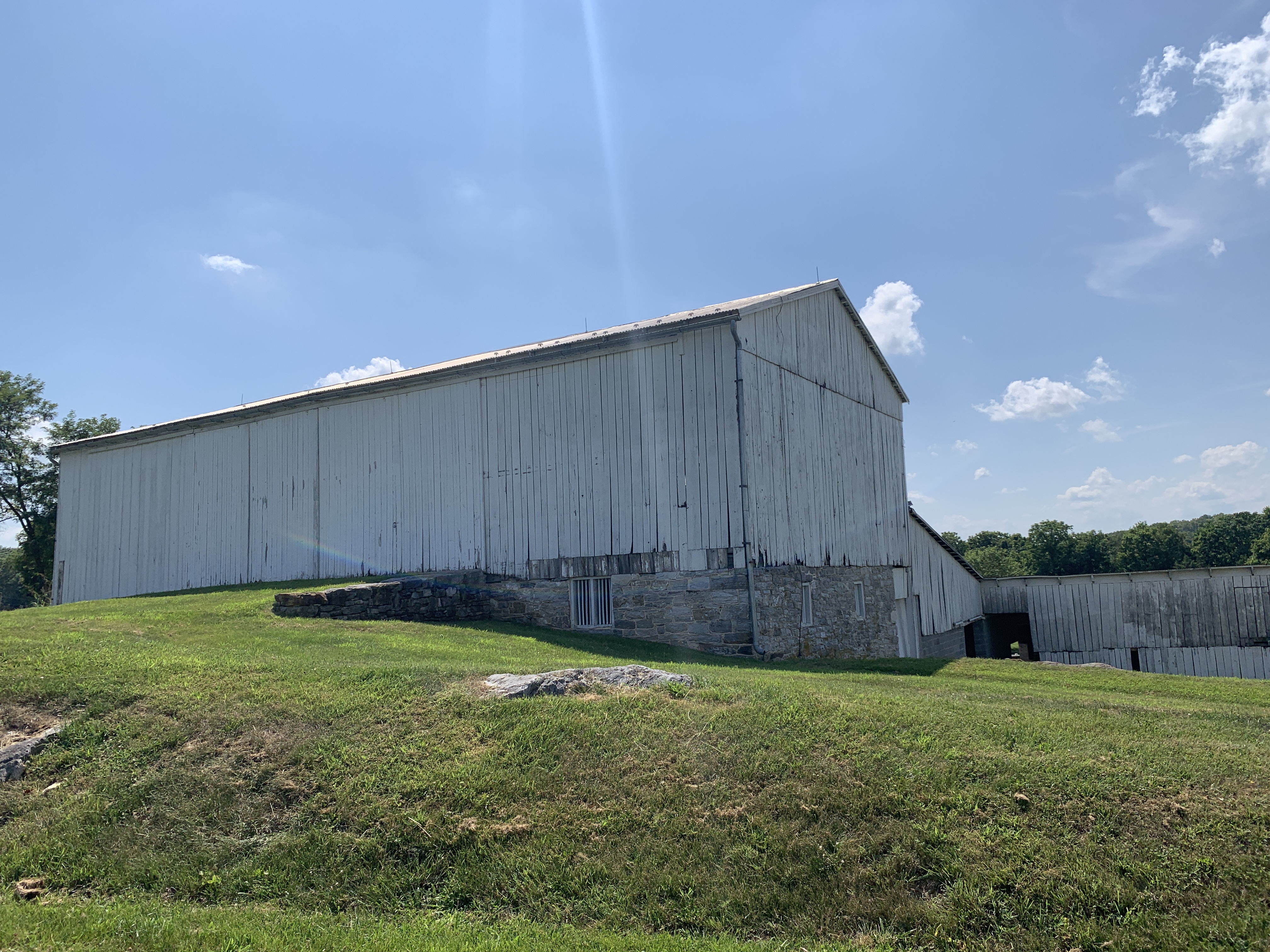
The Mumma Farm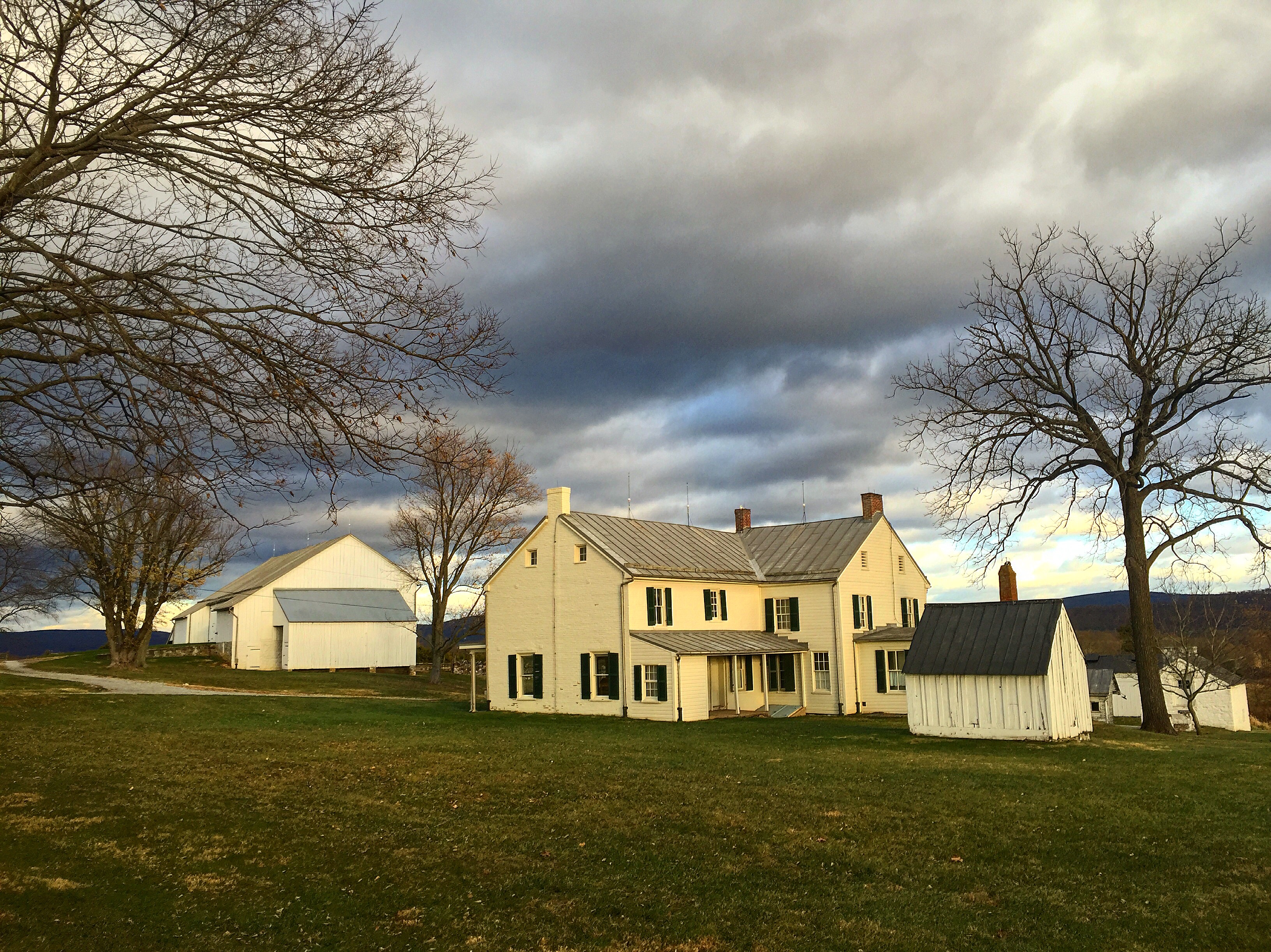
The Newcomer FarmThe Newcomer House is the seasonal welcome center for the Heart of the Civil War Heritage Area, a partner of the Antietam National Battlefield. 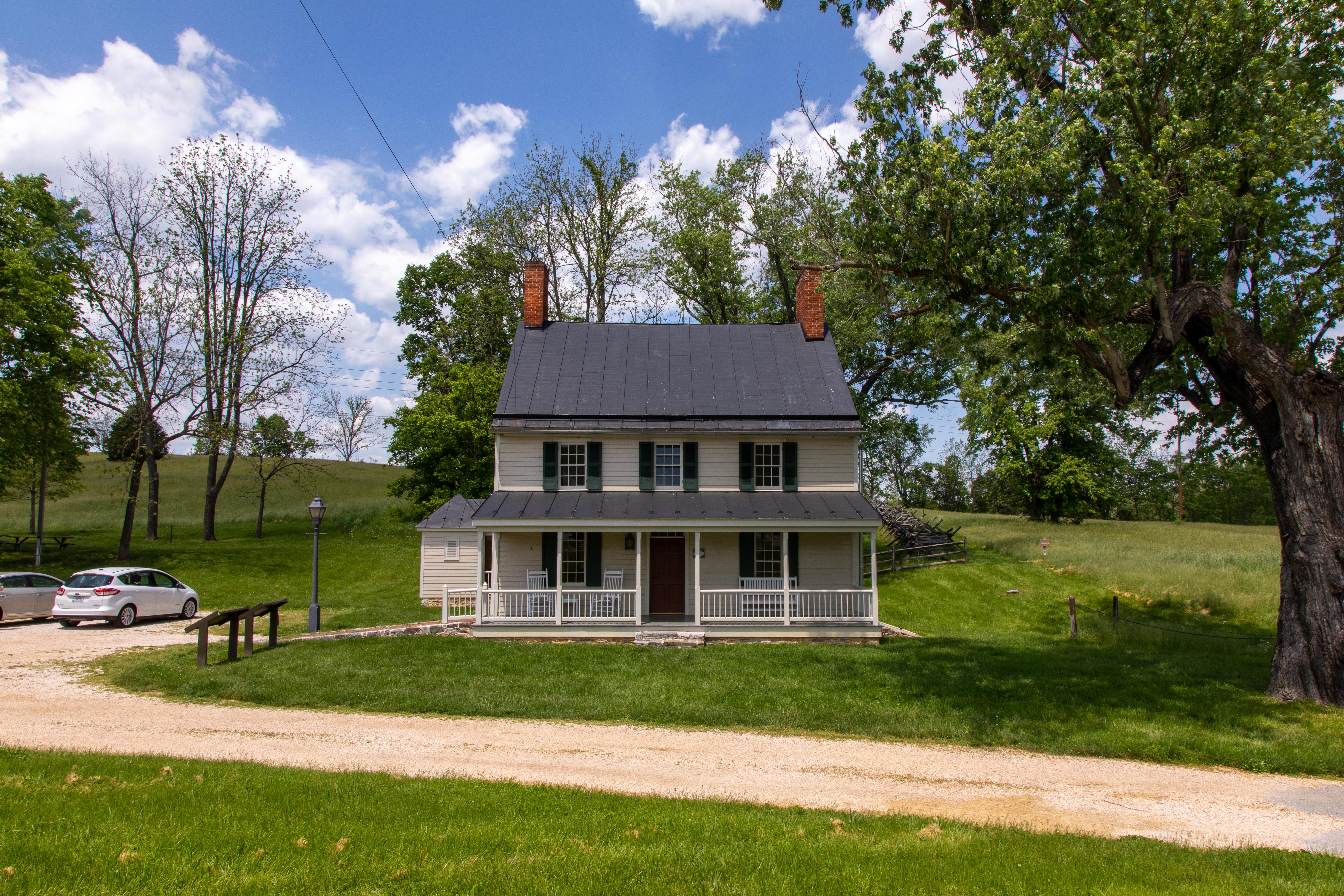
The Newcomer HouseWhere some of the wounded, at the Battle of Antietam, went to receive treatment 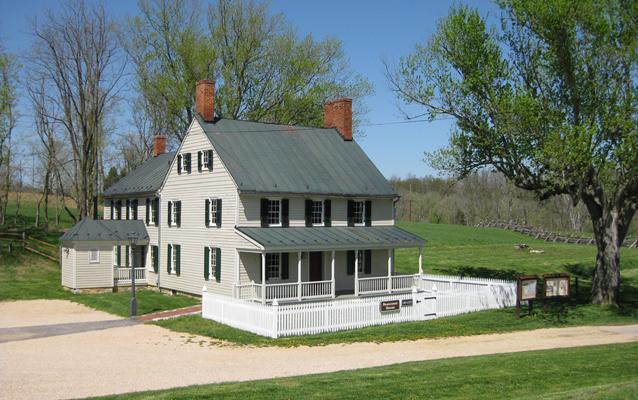
The North Woods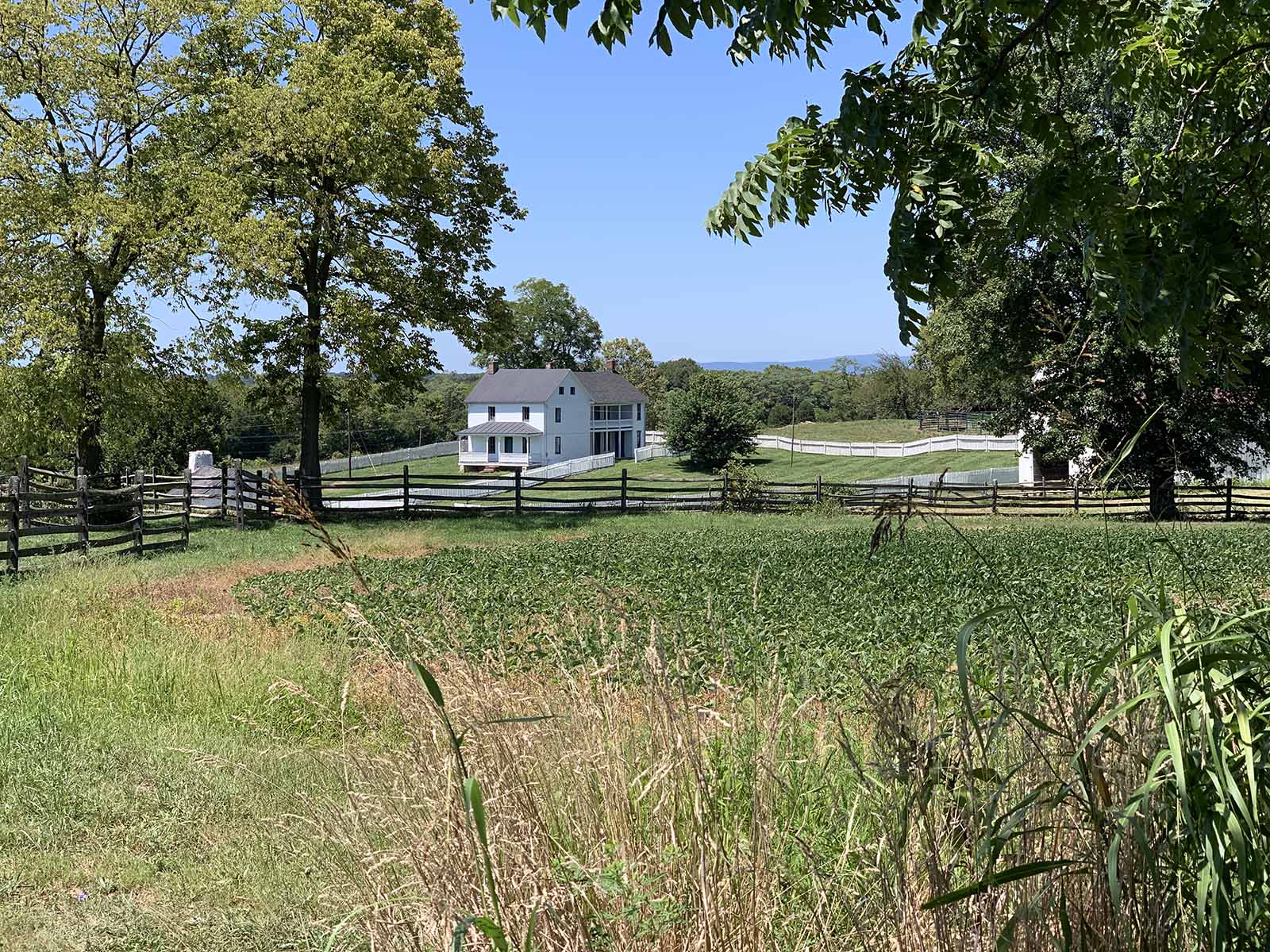
The Otto FarmThe Otto Farm is where Union forces gathered after taking the Burnside Bridge. The final attack of the battle, originated from the fields around the Otto property. 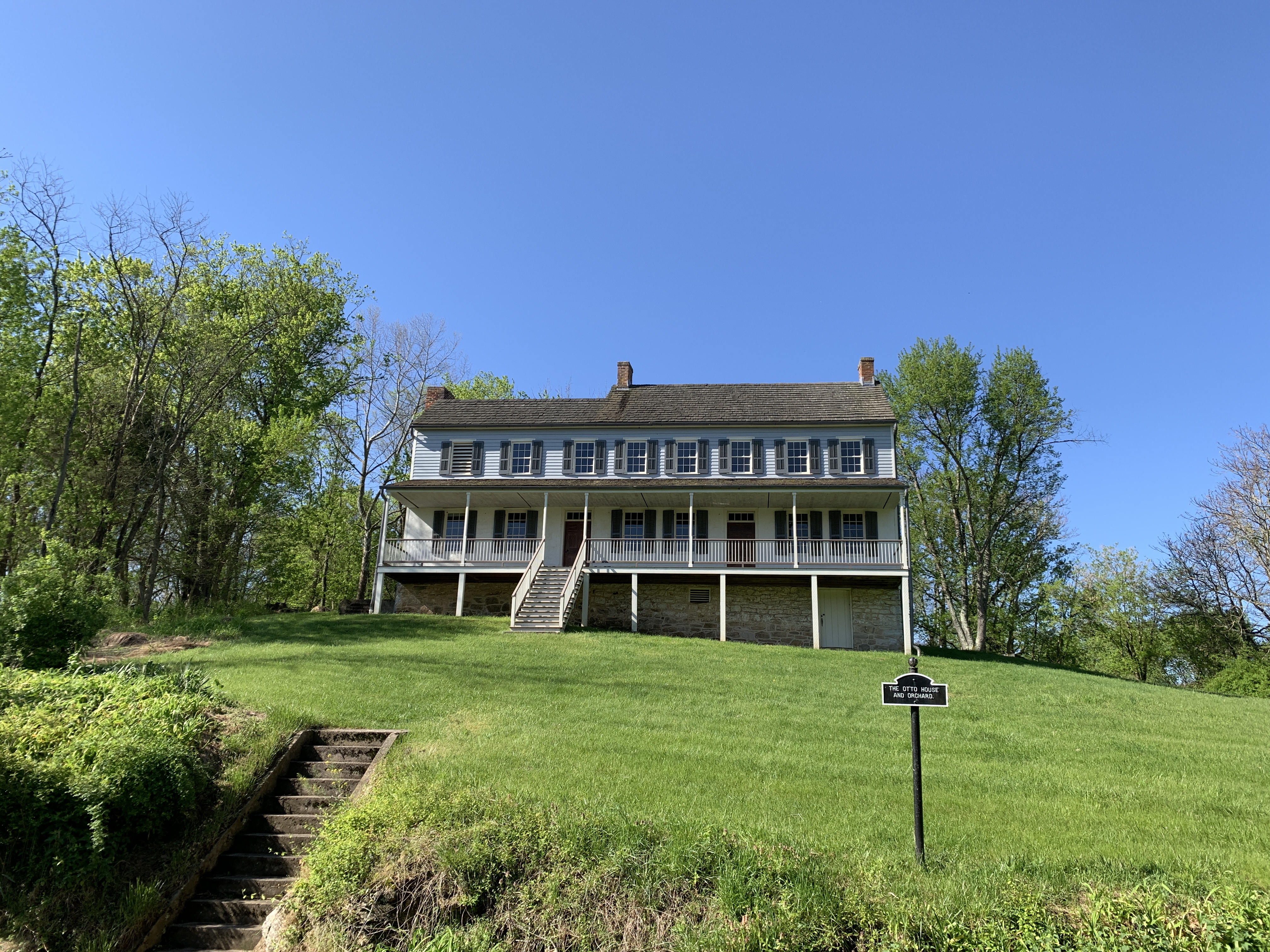
The Piper FarmThe Piper Farm was the headquarters site for a few Confederate generals before the Battle of Antietam. Thousands of Confederate reinforcements streamed across the property on their way to the Sunken Road. 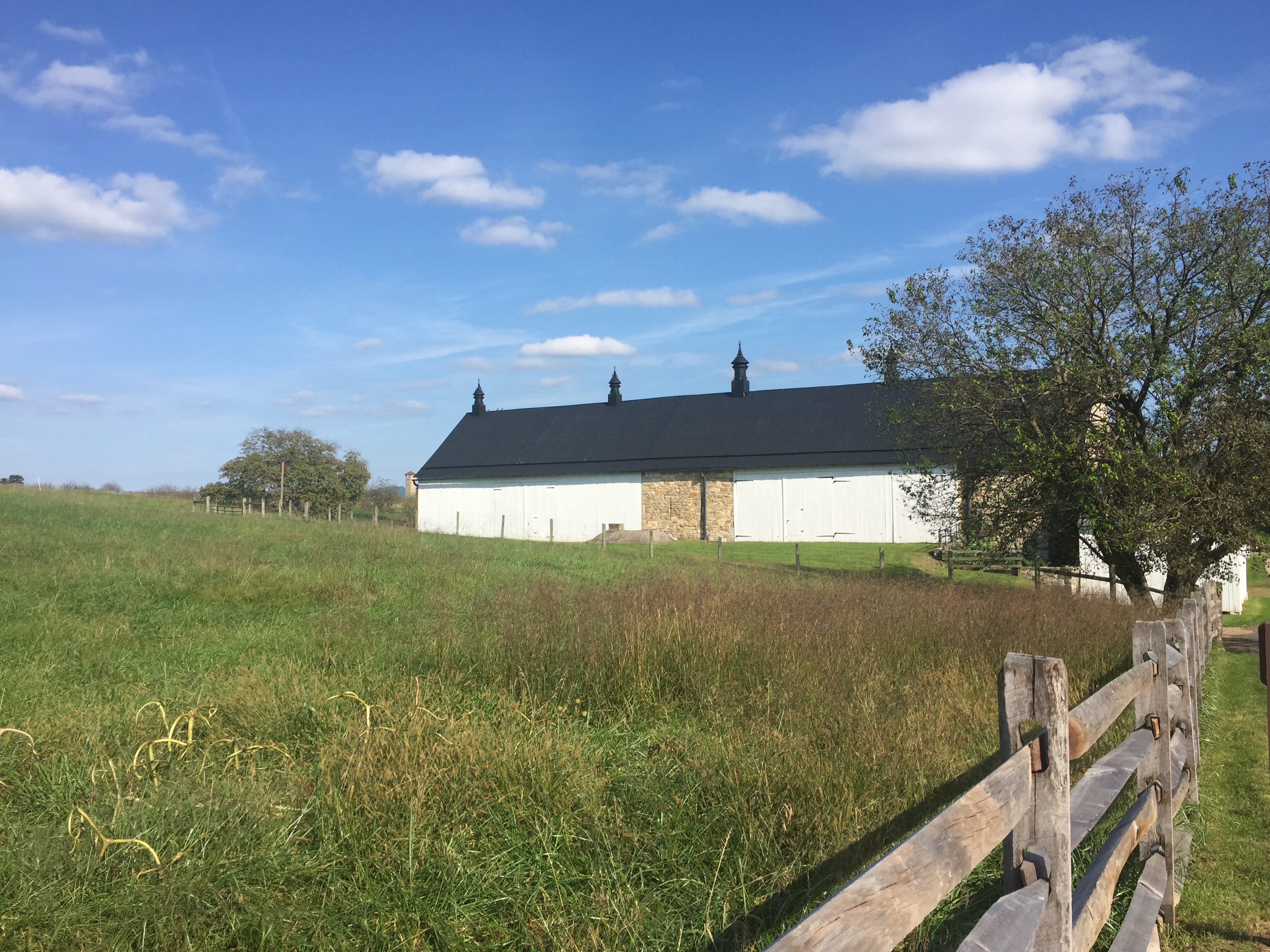
The Pry FarmThe Pry House was used by Union General George McClellan as a command post during the battle. Two wounded Federal generals were brought back to the house, which was a hospital in the days after the fight. 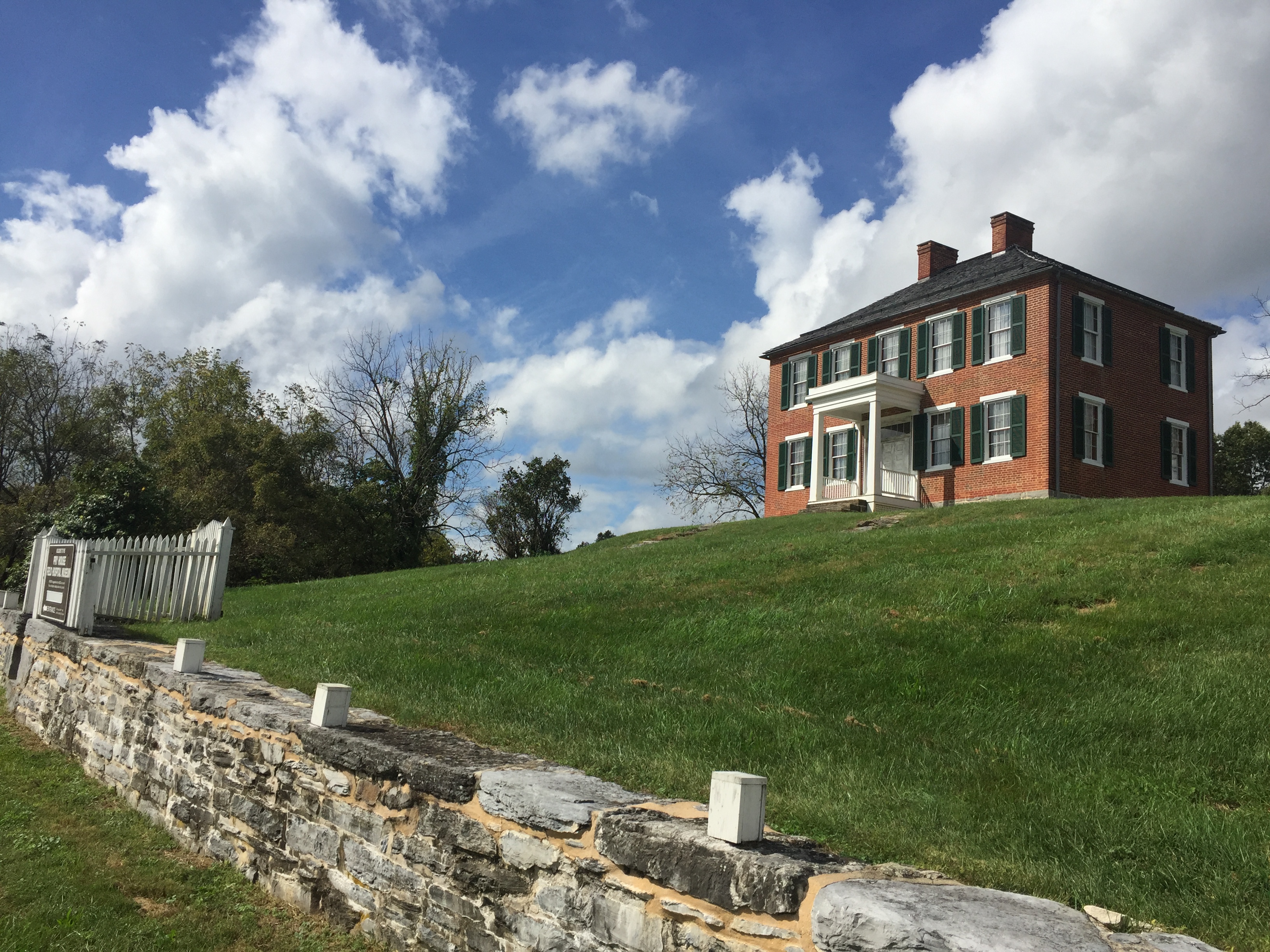
The Roulette FarmThe Union troop advanced across this property on their advance on the Sunken Road. The family survived the battle, but lost many belongings and stores they had saved up in preparation for the coming winter. 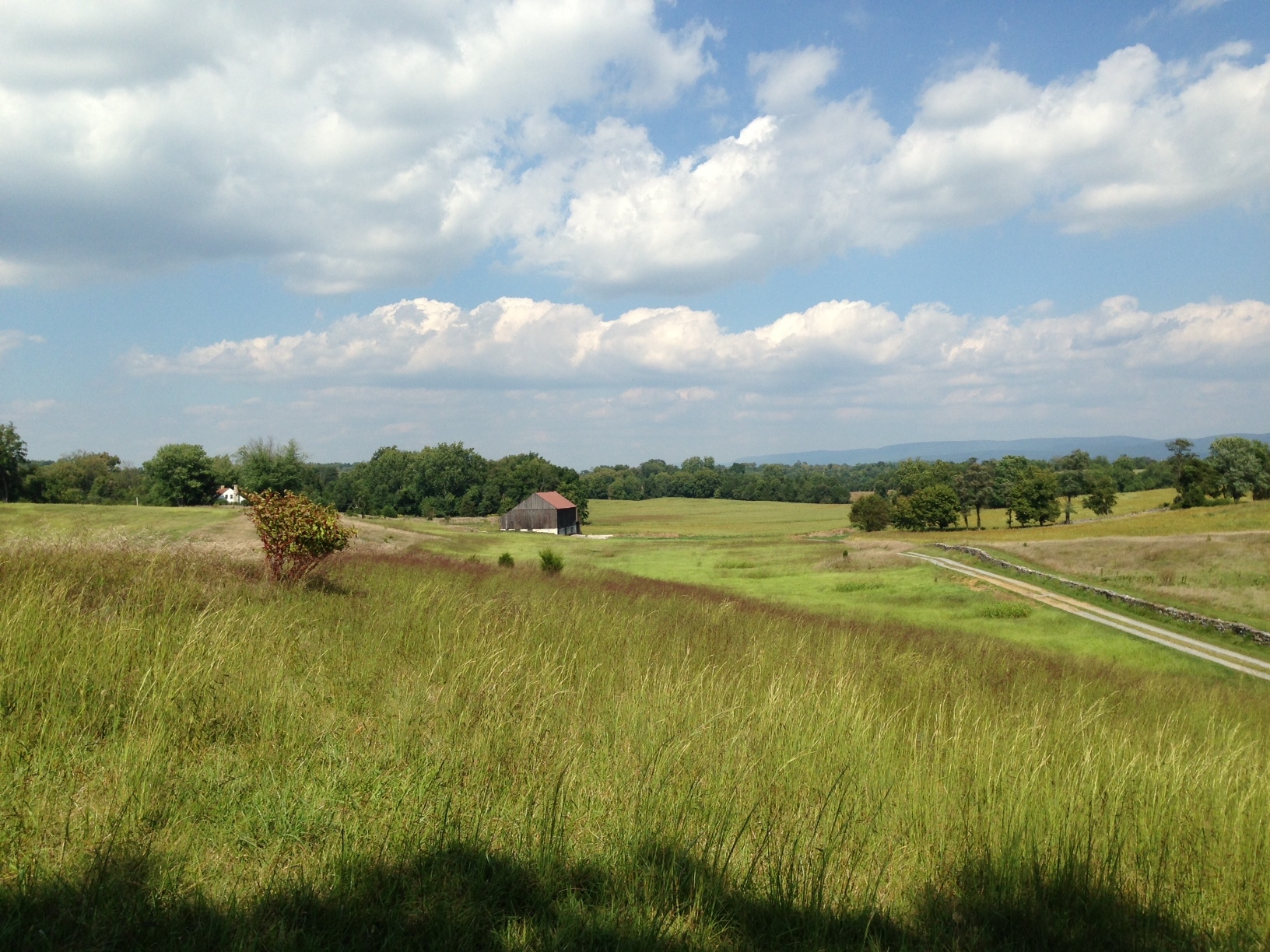
The Sherrick FarmFederal troops crossed over this farmstead during the final attack of the Battle of Antietam. 
The West WoodsDuring the morning of September 17, 1862, West Woods was the scene of some of the opening fighting of the Battle of Antietam and some of the heaviest fighting of the entire war. 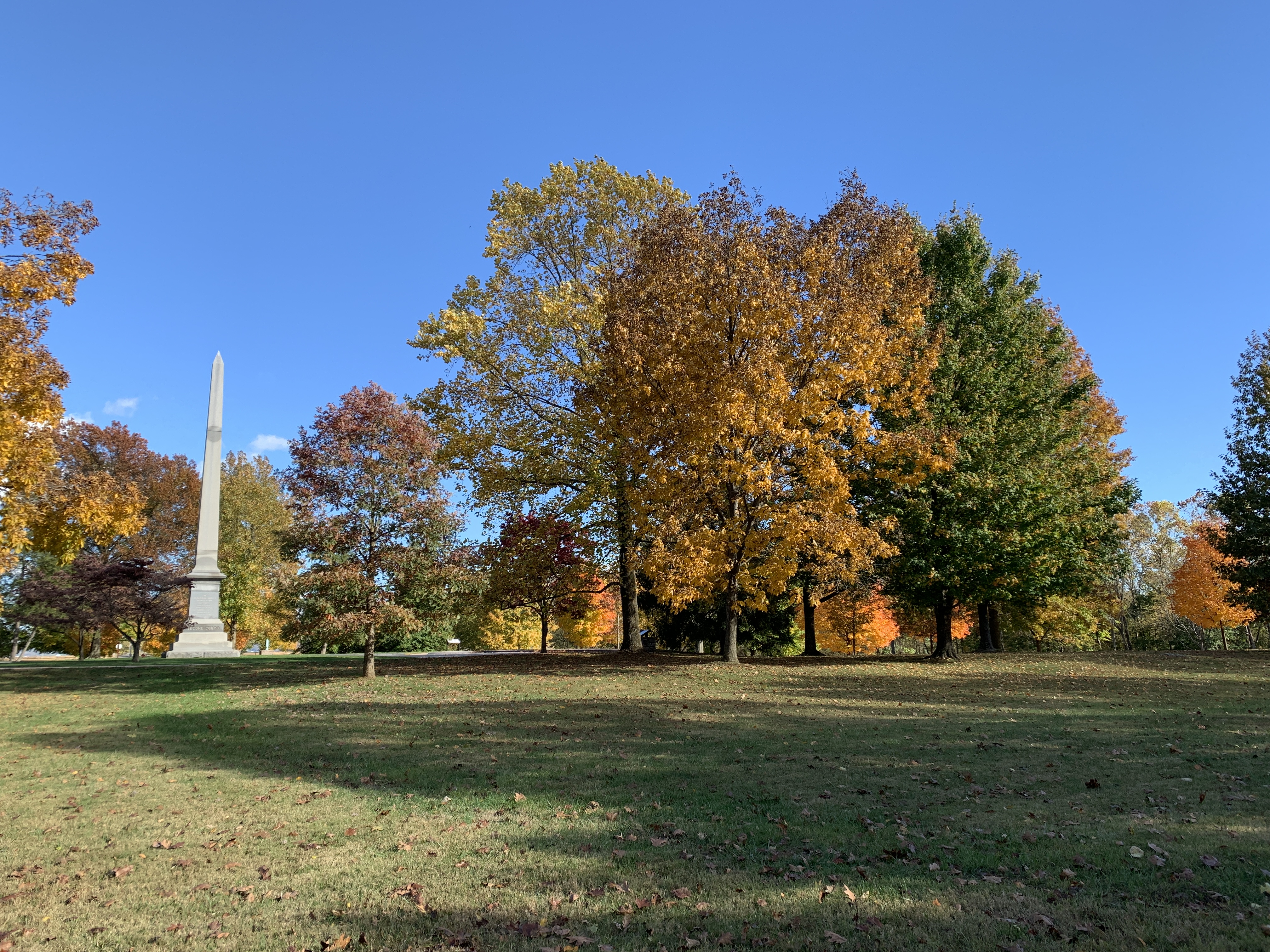
Union Advance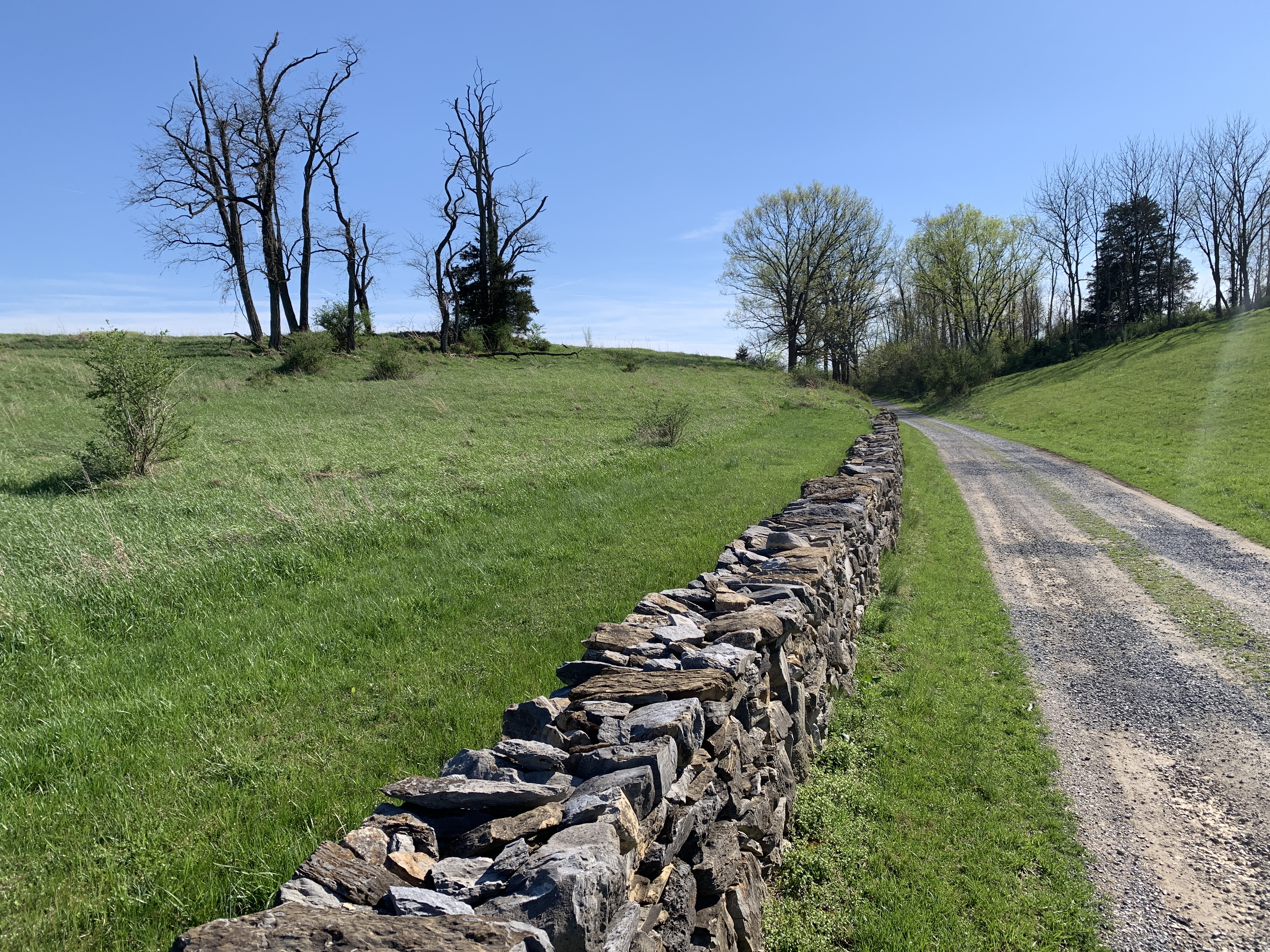
West WoodsThroughout the morning of the battle, the Union army launched numerous attacks in and around the West Woods attempting to drive the Confederates from the field. General John Sedgewick's Union division lost over 2,000 killed and wounded during one of these attacks. 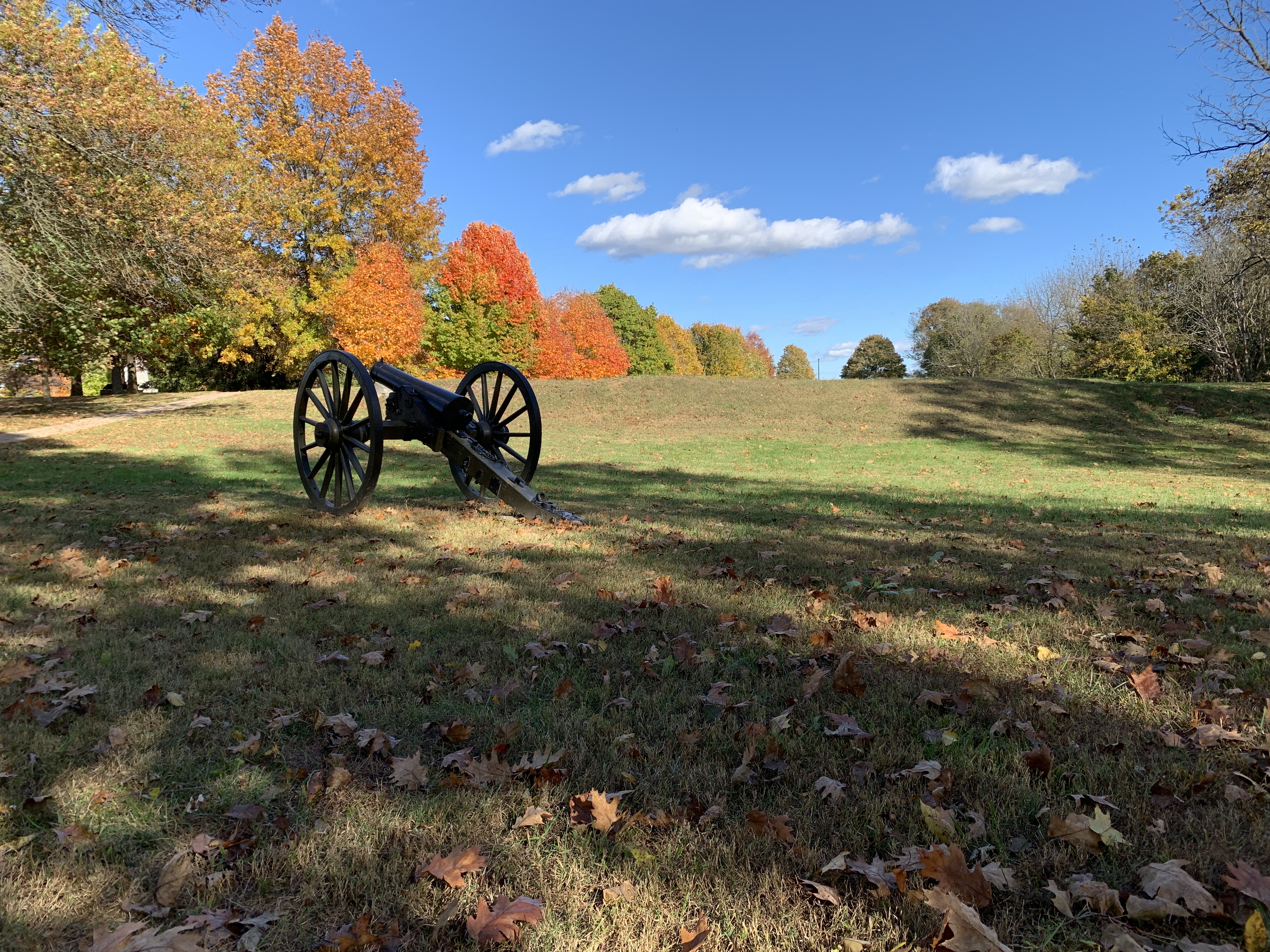
|
| Visitor Centers | Count: 1
Antietam National Battlefield Visitor Center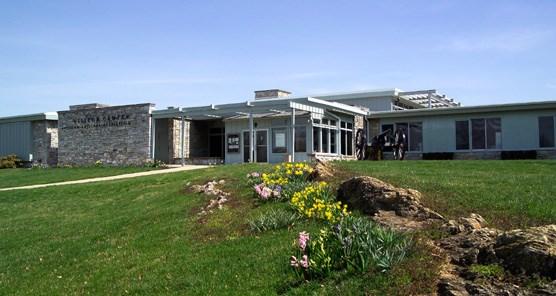
|
| Things to do | Count: 4
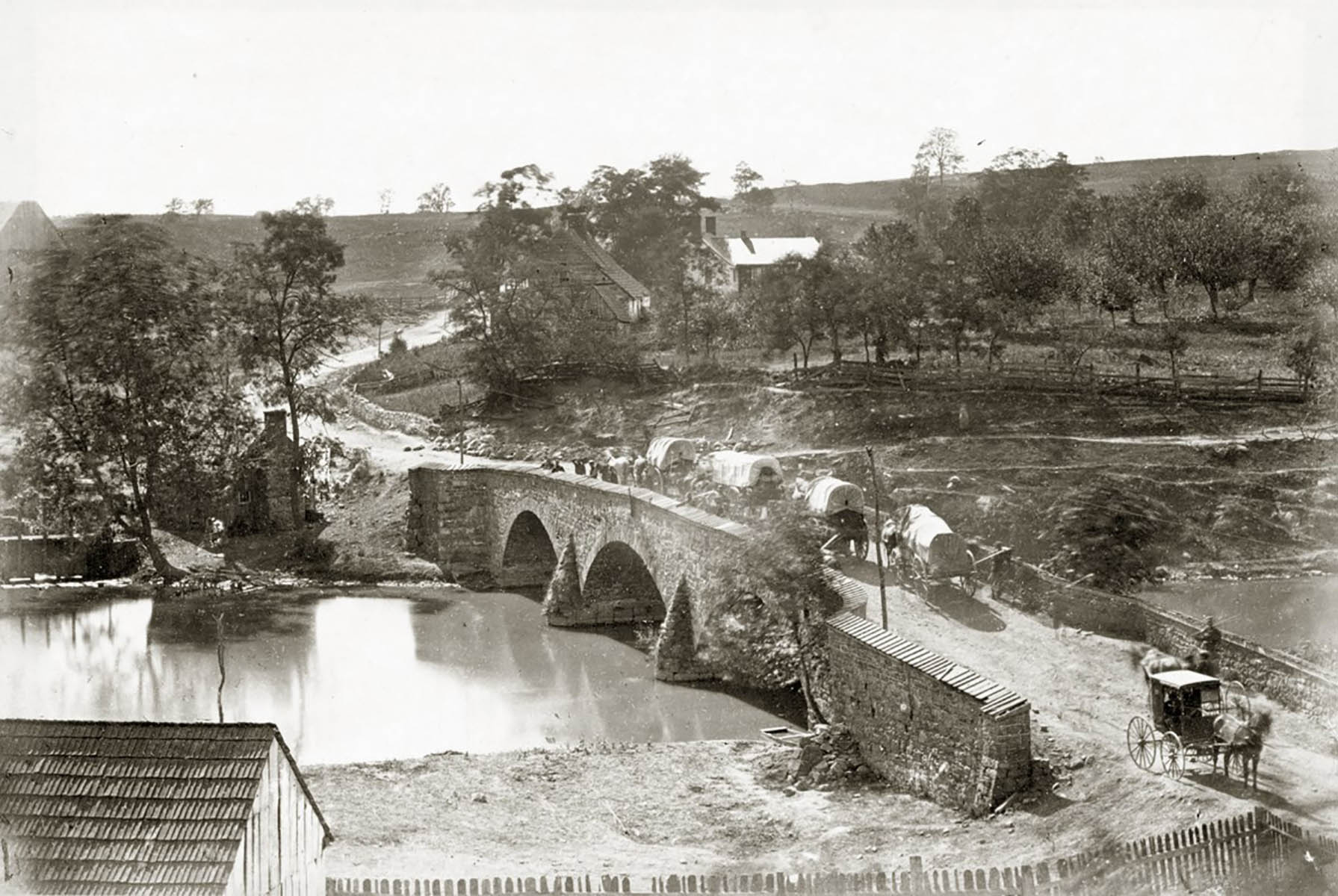
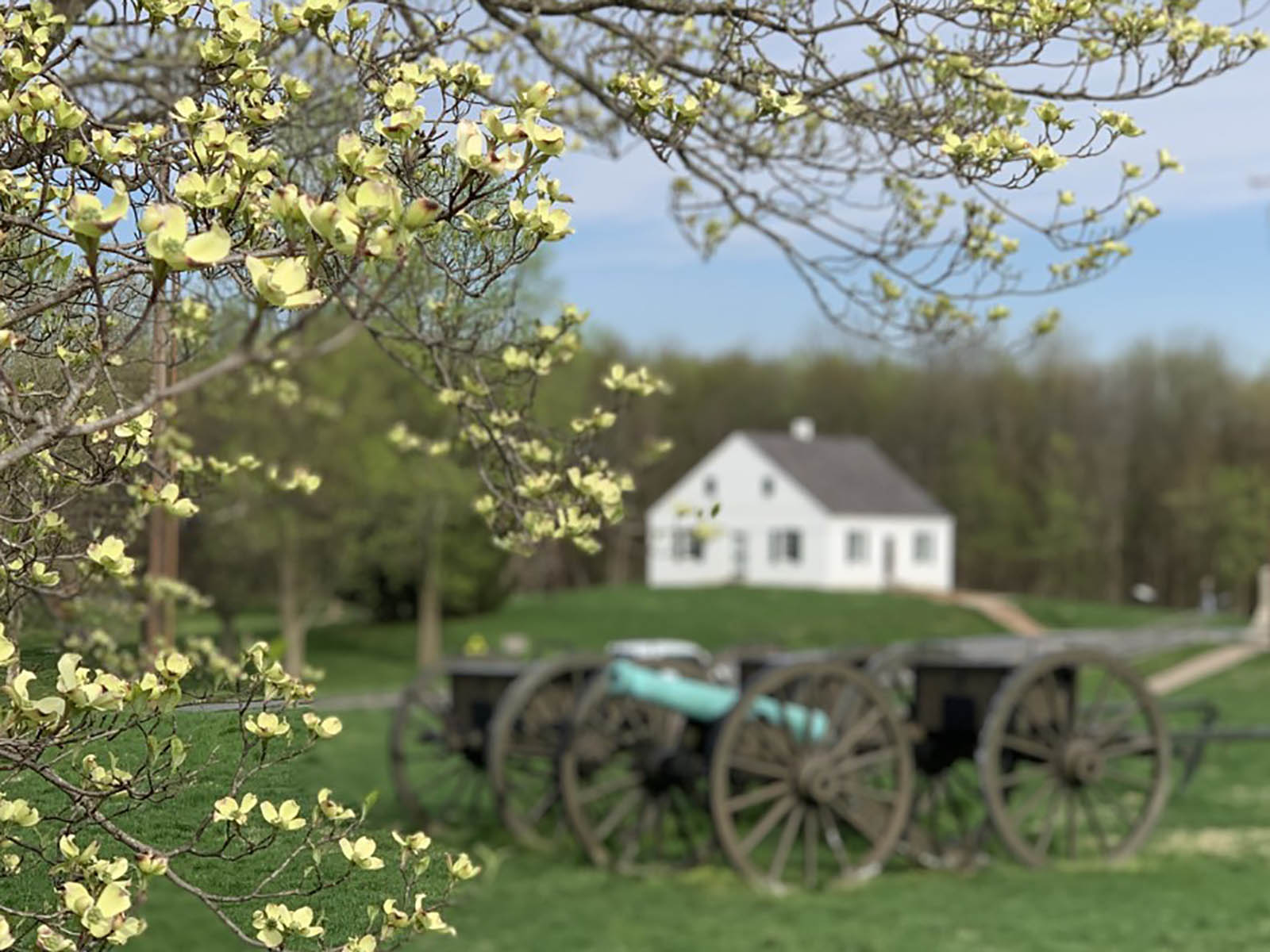

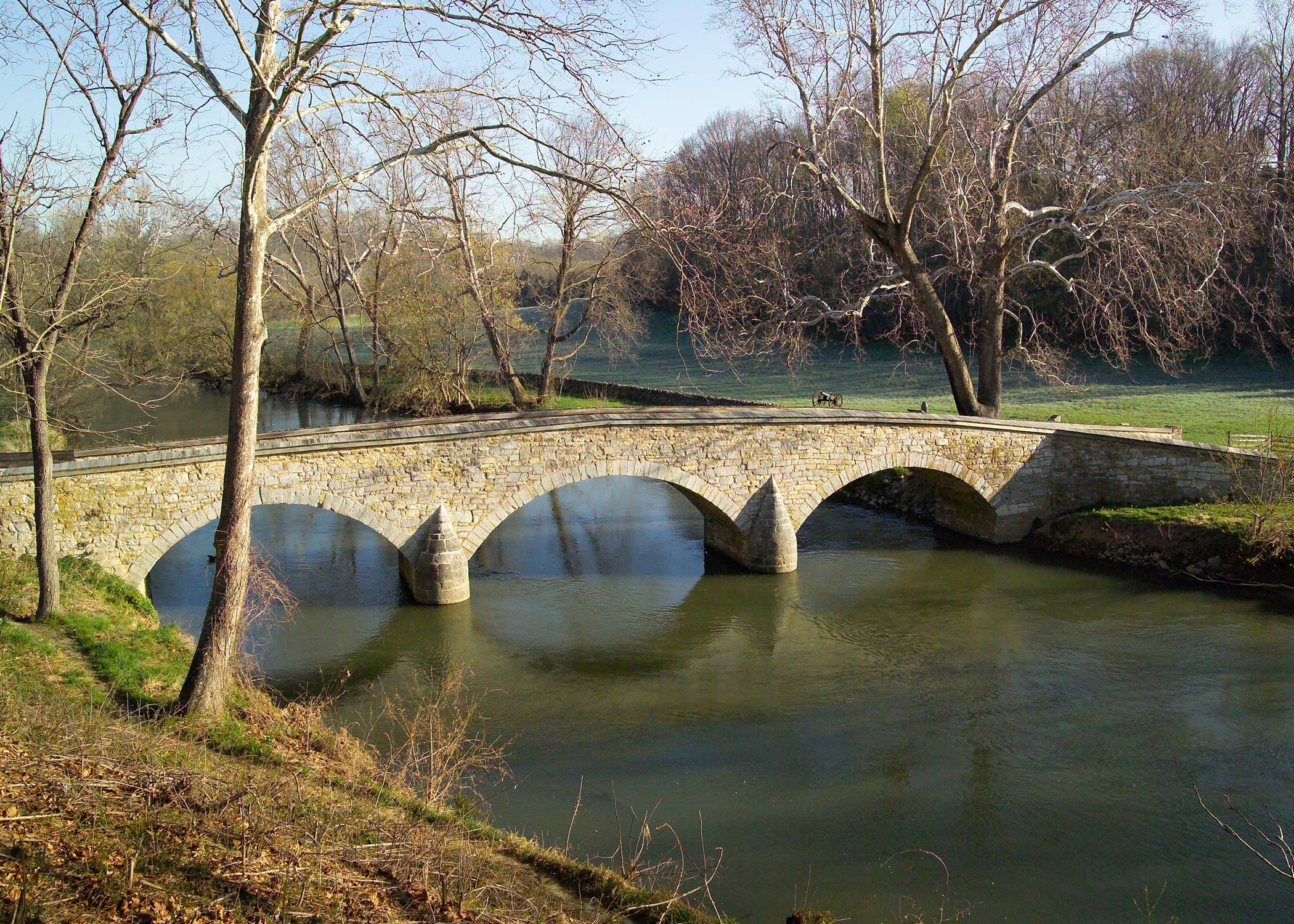
|
| Tours |
Count: 3
Farmsteads TourThis tour will direct visitors to the historic farmsteads on the battlefield. It will be combination of driving to each site and depending upon your level of interest, you will have to walk about five minutes in some cases to see the farm. Only the Pry and Newcomer Houses are open to the public, limited hours during the summer. Remembered TrailWhat is a Battlefield Park? How does a nation commemorate and remember its history? During this walk you will discover how veterans, the military, citizens, and the National Park Service created and preserved the tangible reminders of the Battle of Antietam for over 140 years. The paved, quarter-mile trail starts and ends at the visitor center. It will take you past some significant landmarks and monuments that help tell the story of the battle and the evolution of this national park. Self-Guided Driving TourThis tour is the 9 mile, 10 stop auto tour of the battlefield. Each stop has a parking lot and interpretive signs providing additional information about each location. Some of the stops also are great places to start a short hike of the surrounding area. |
| Articles |
|